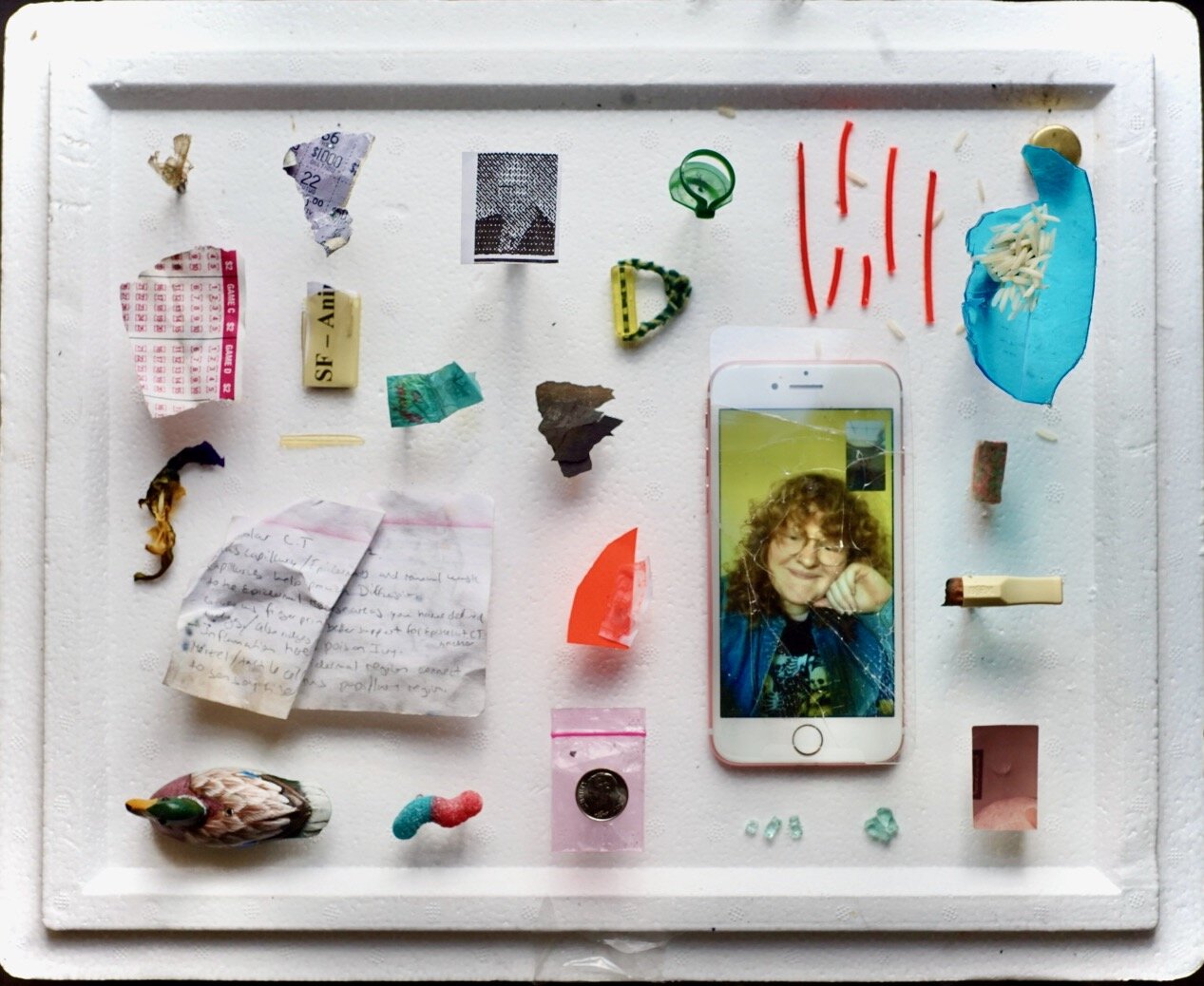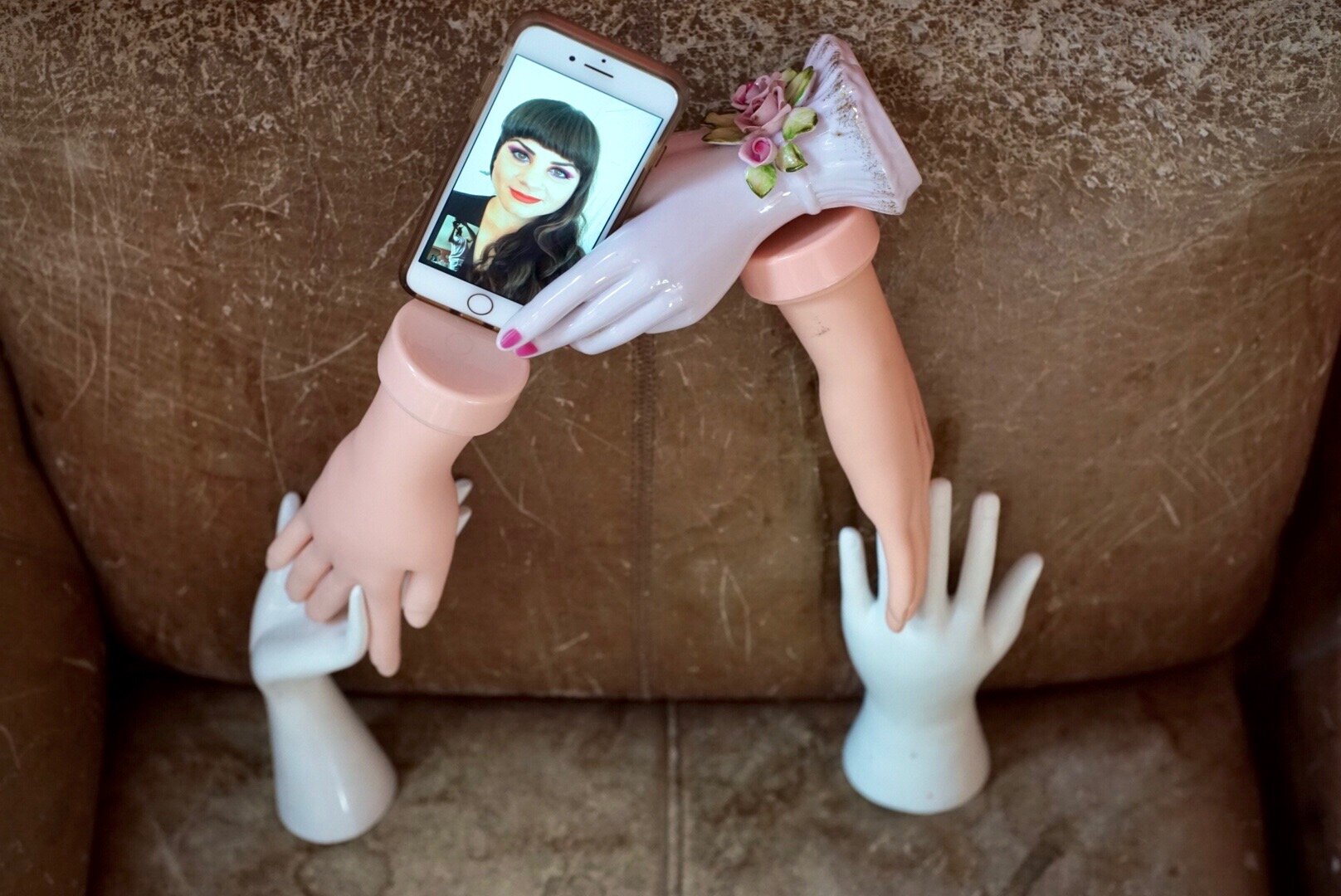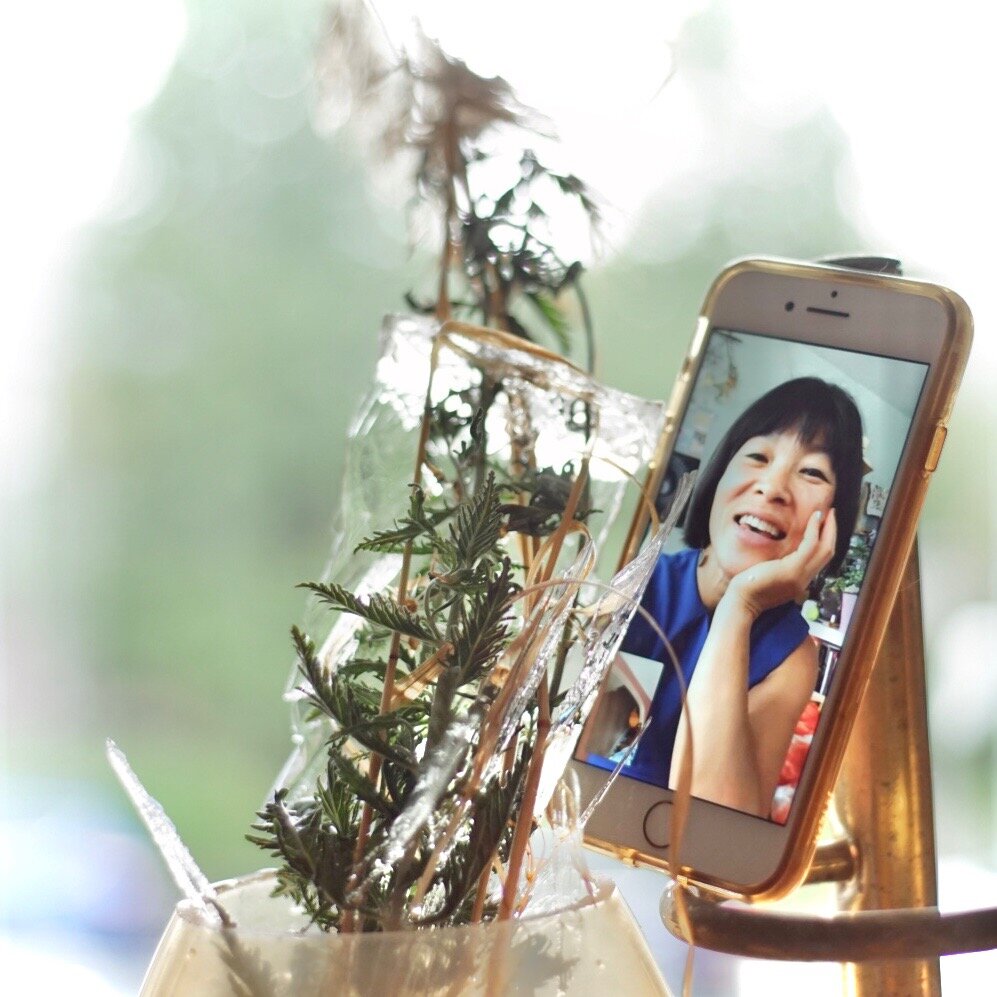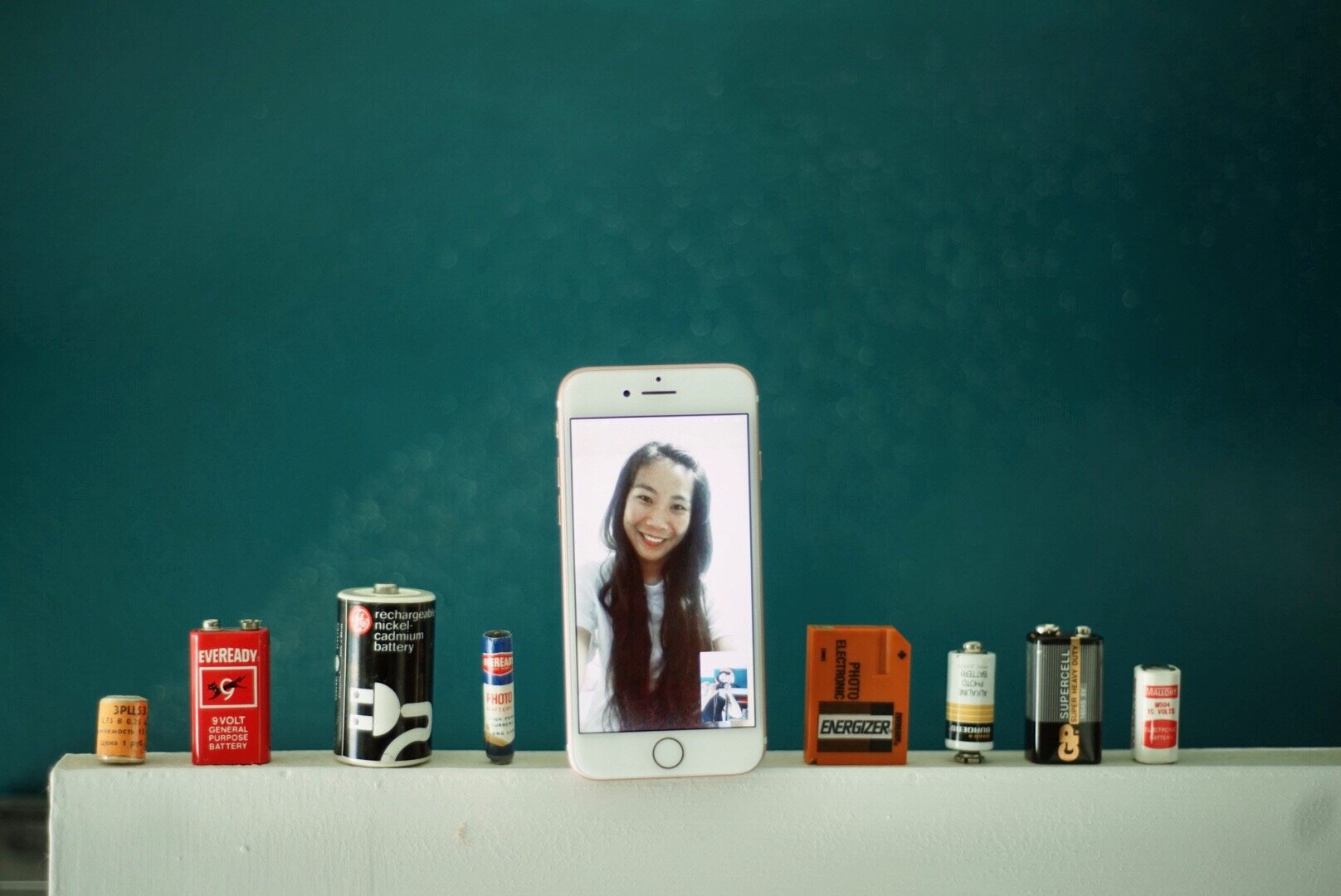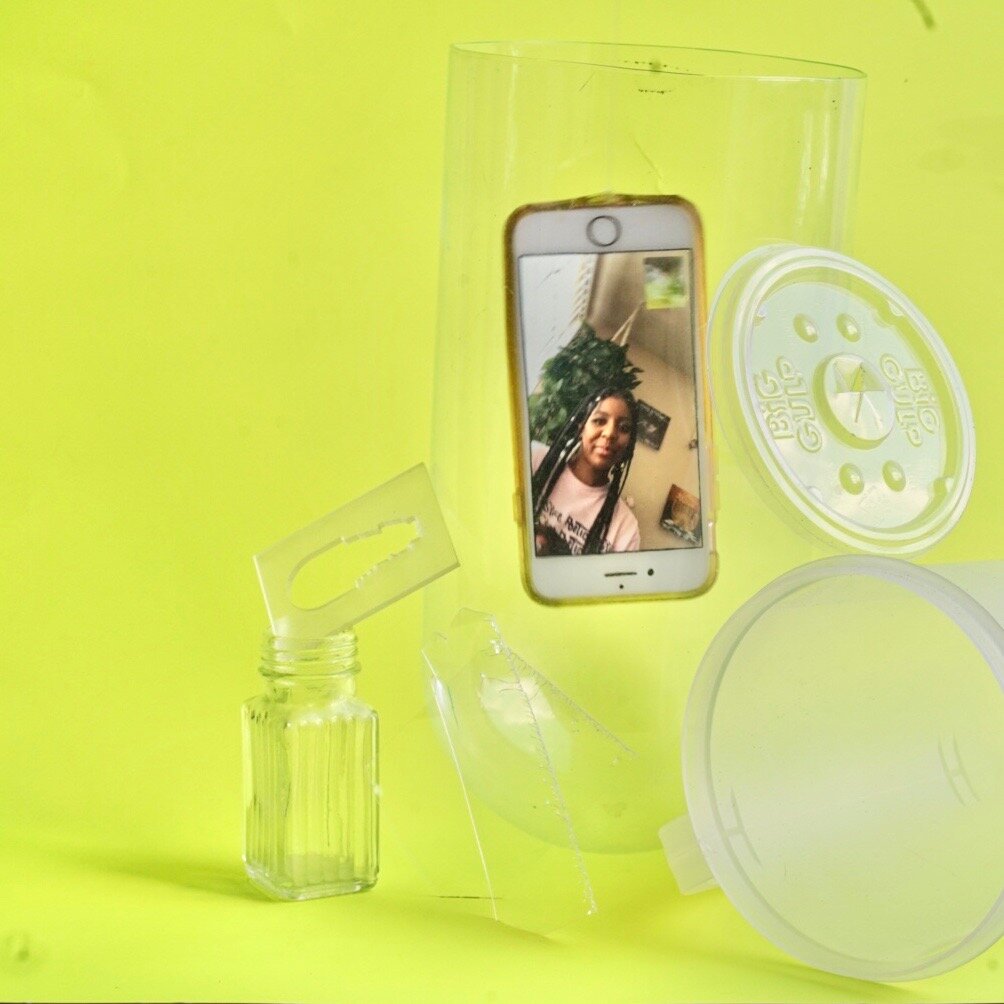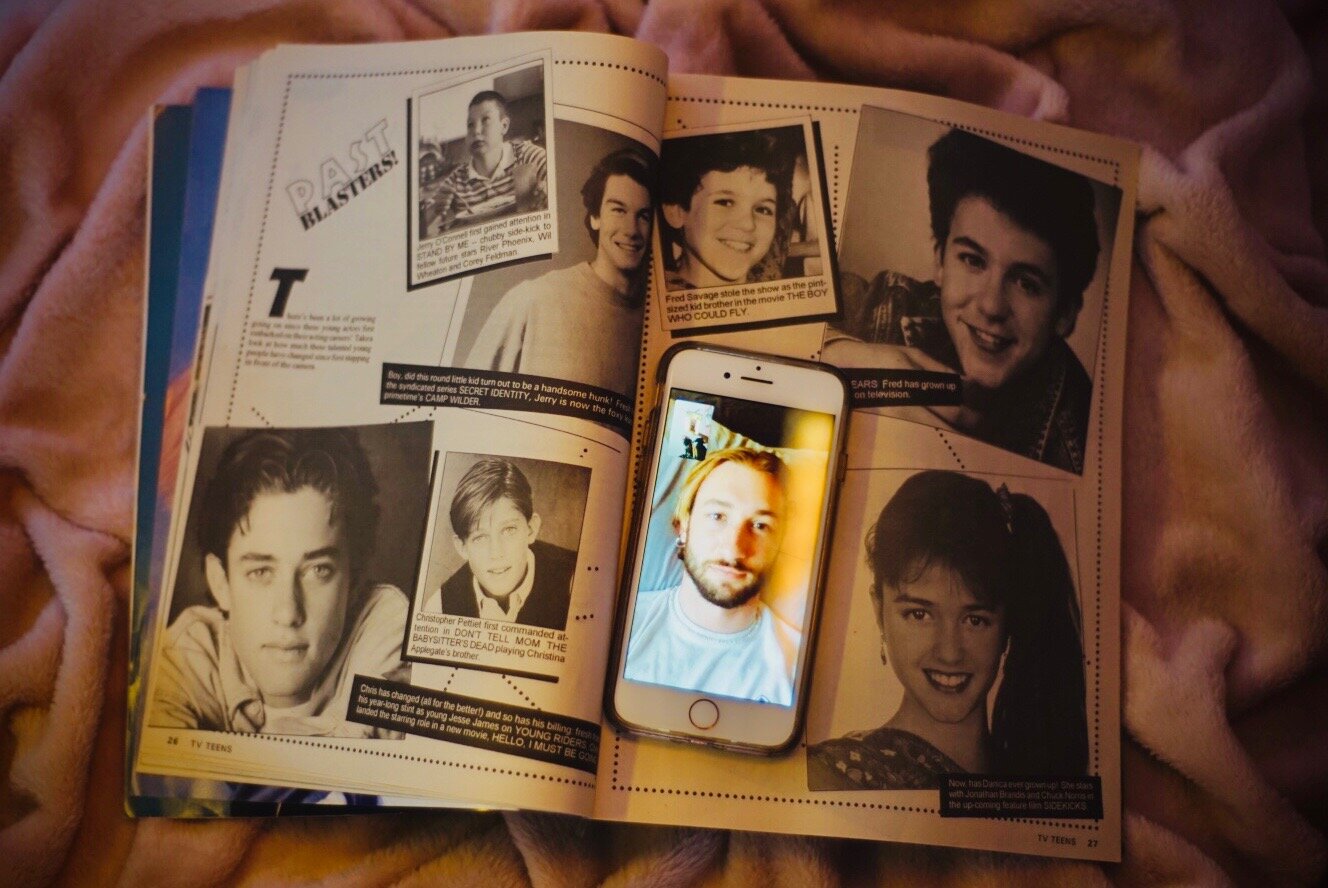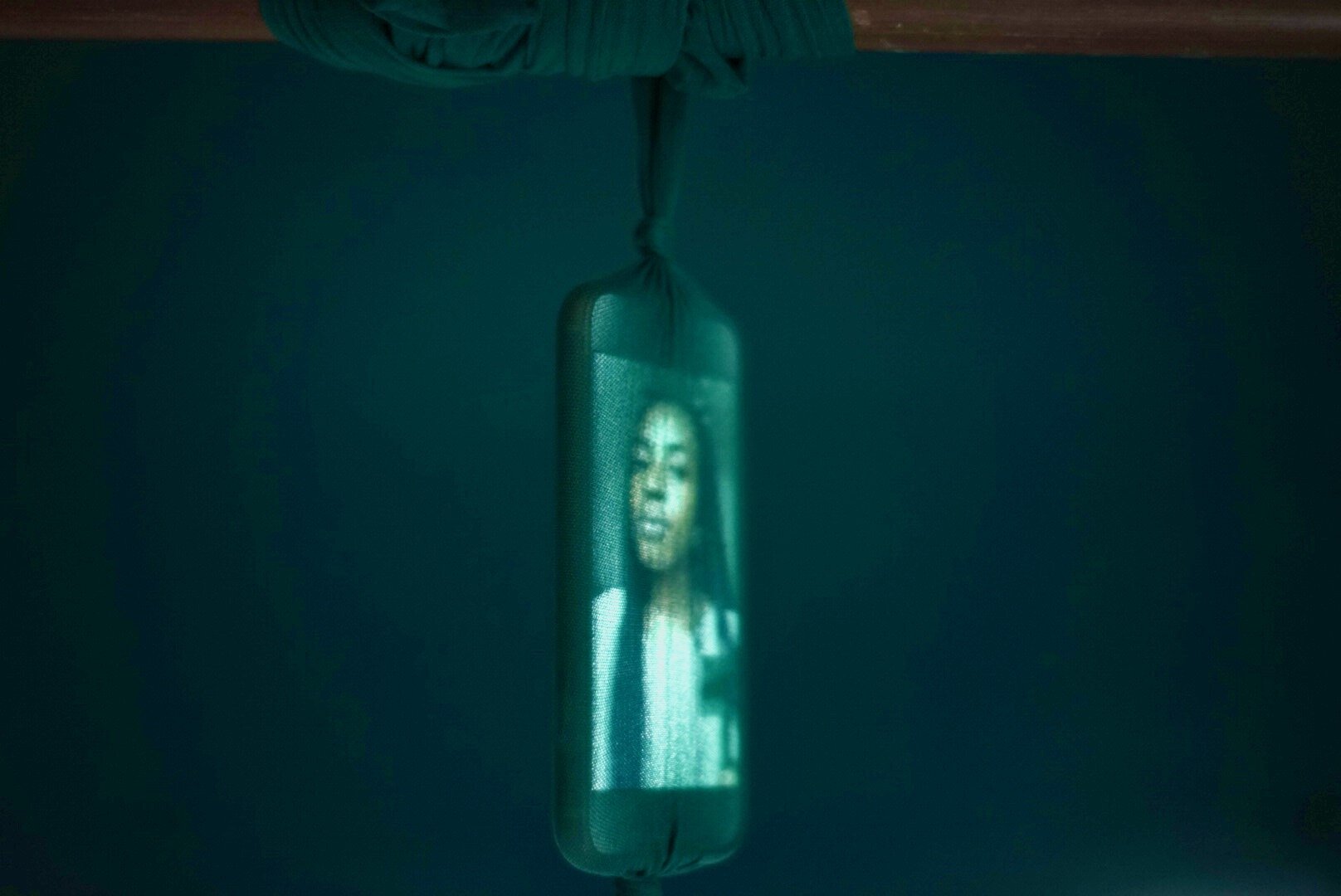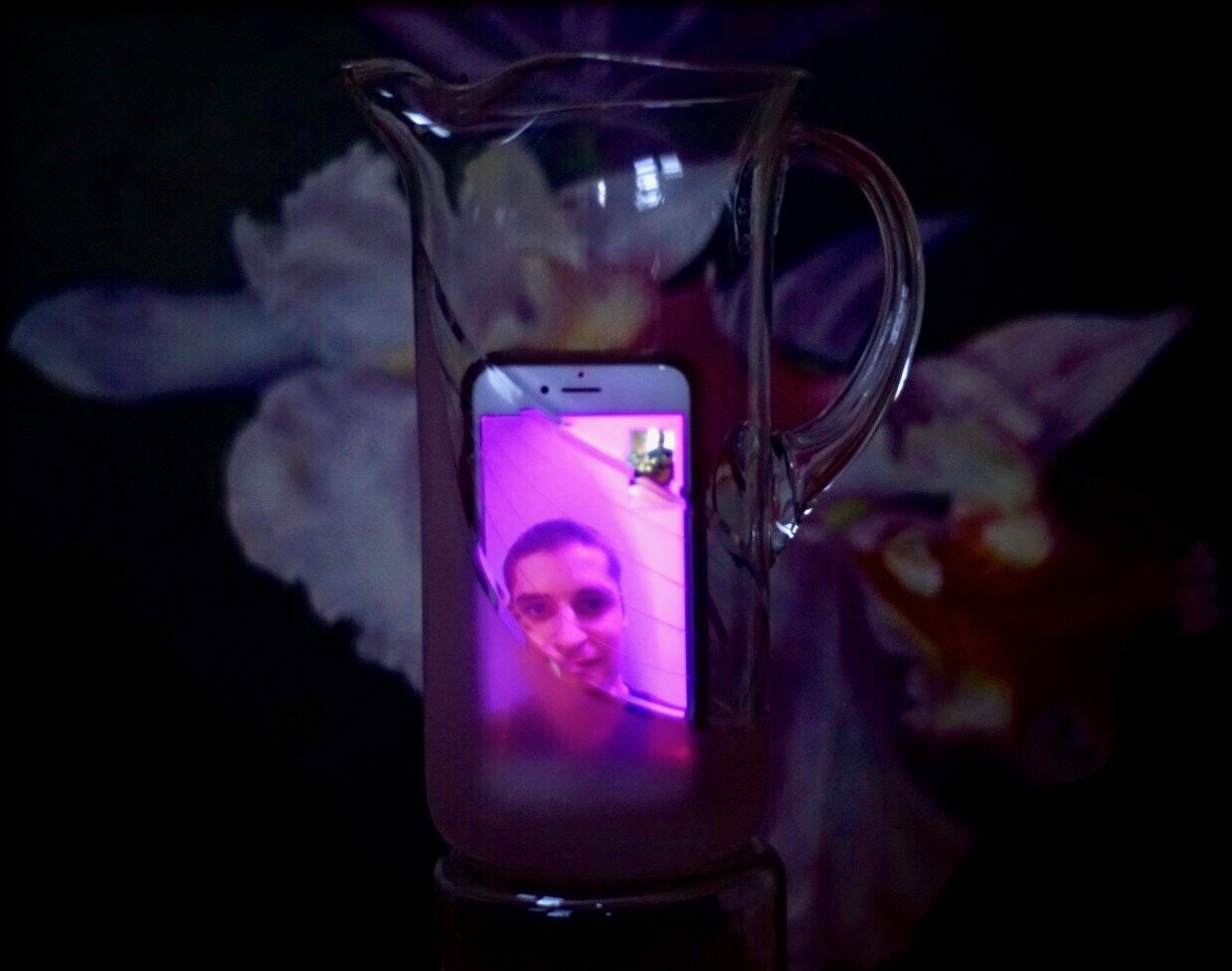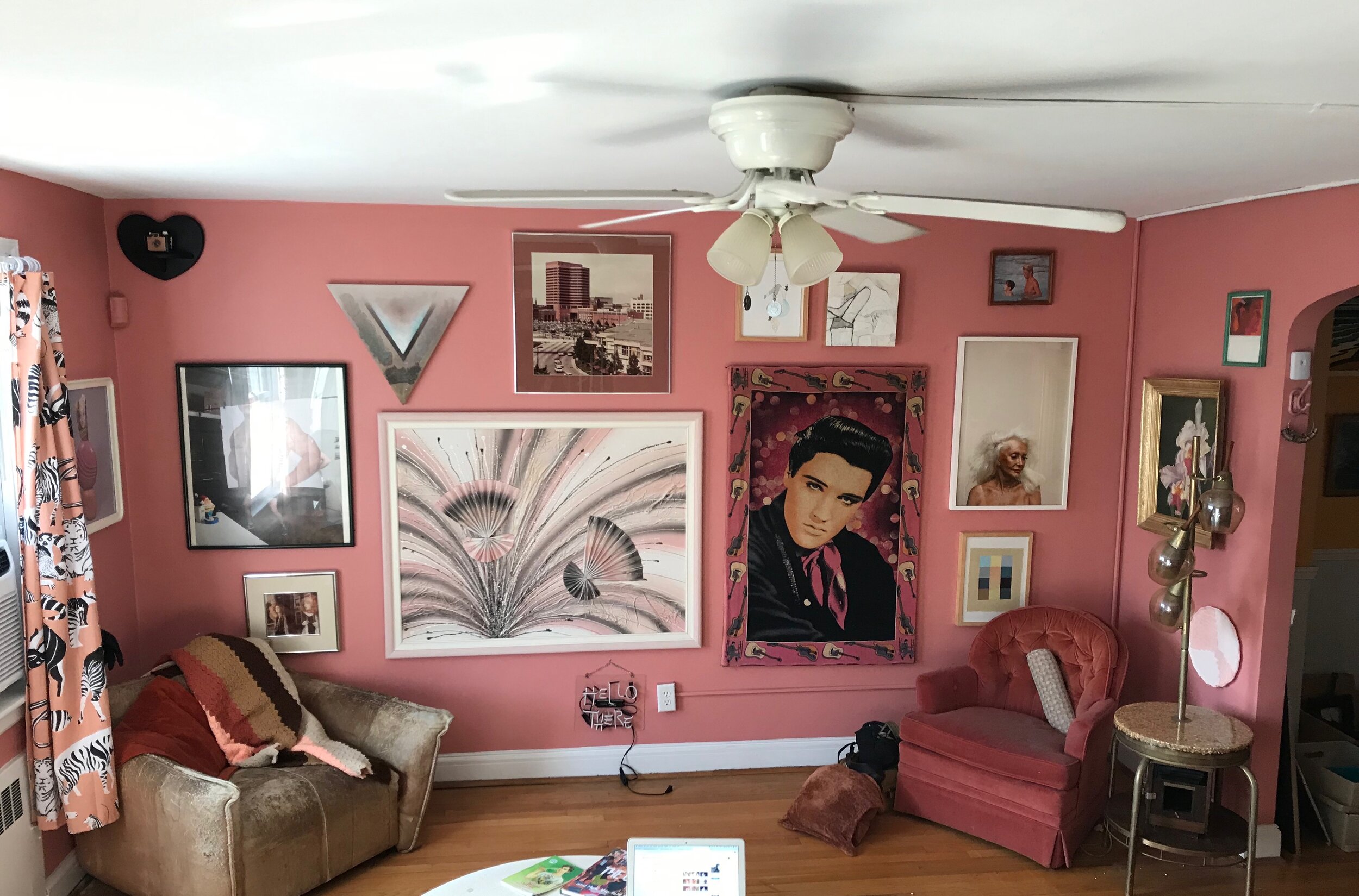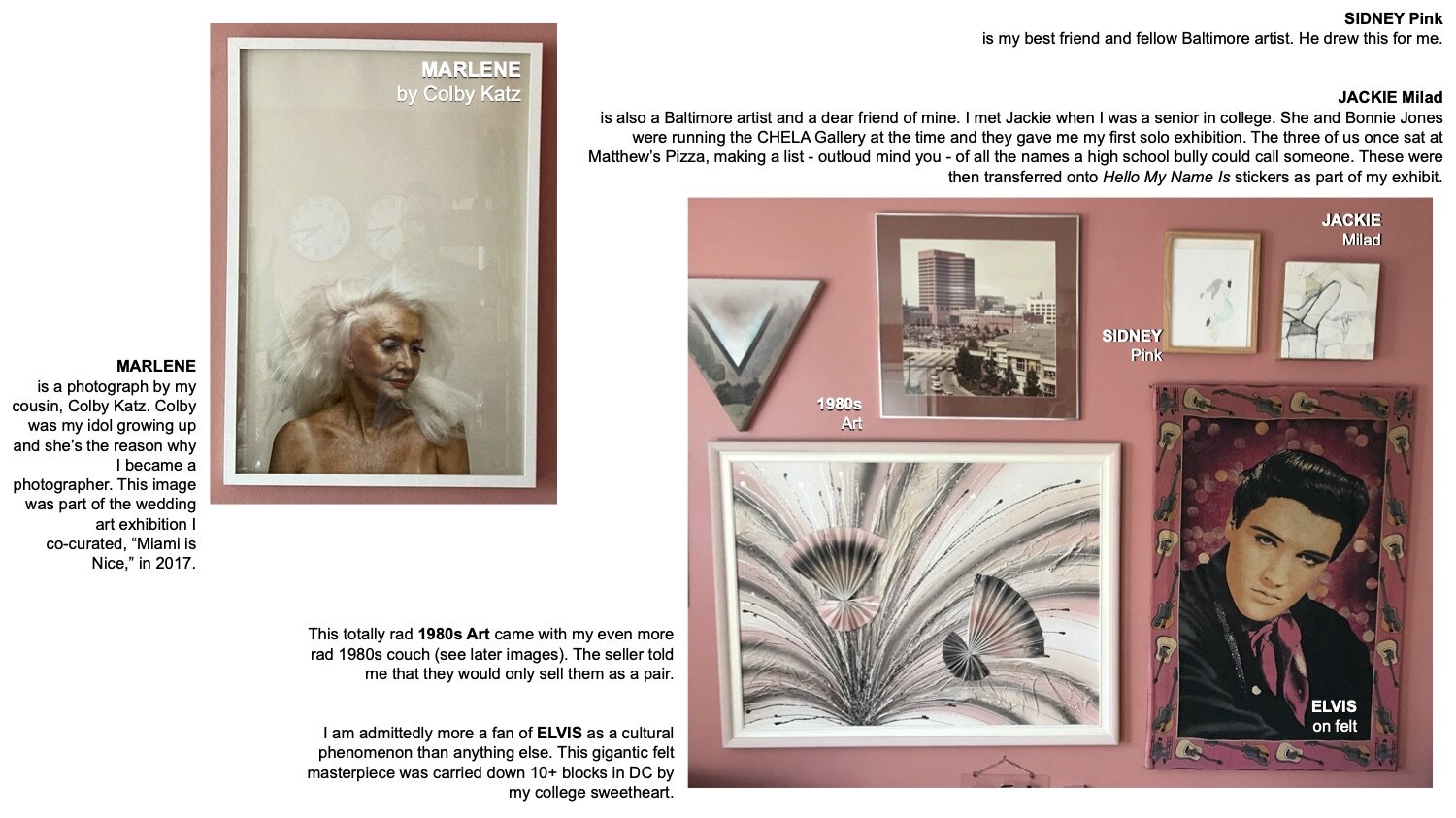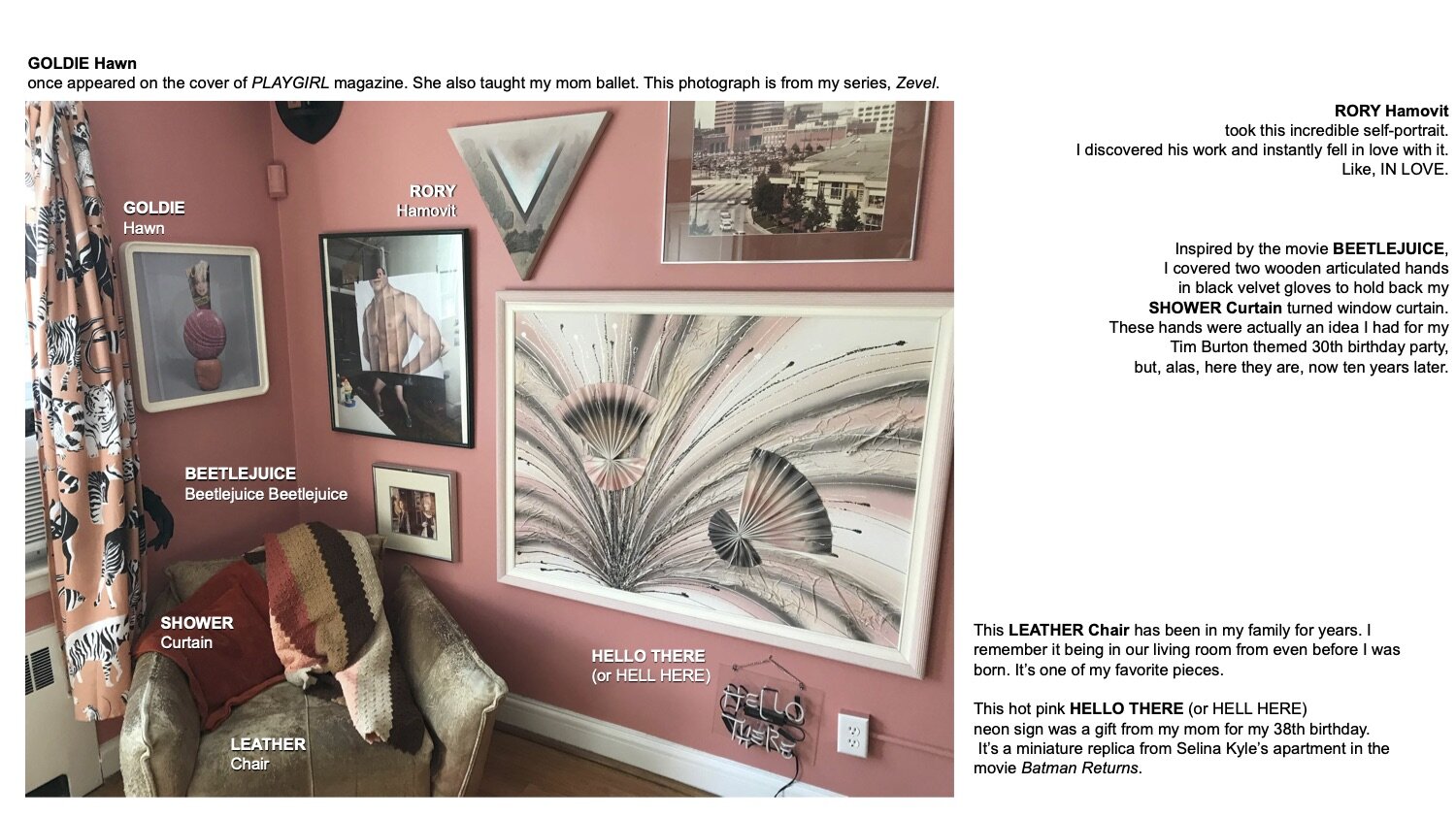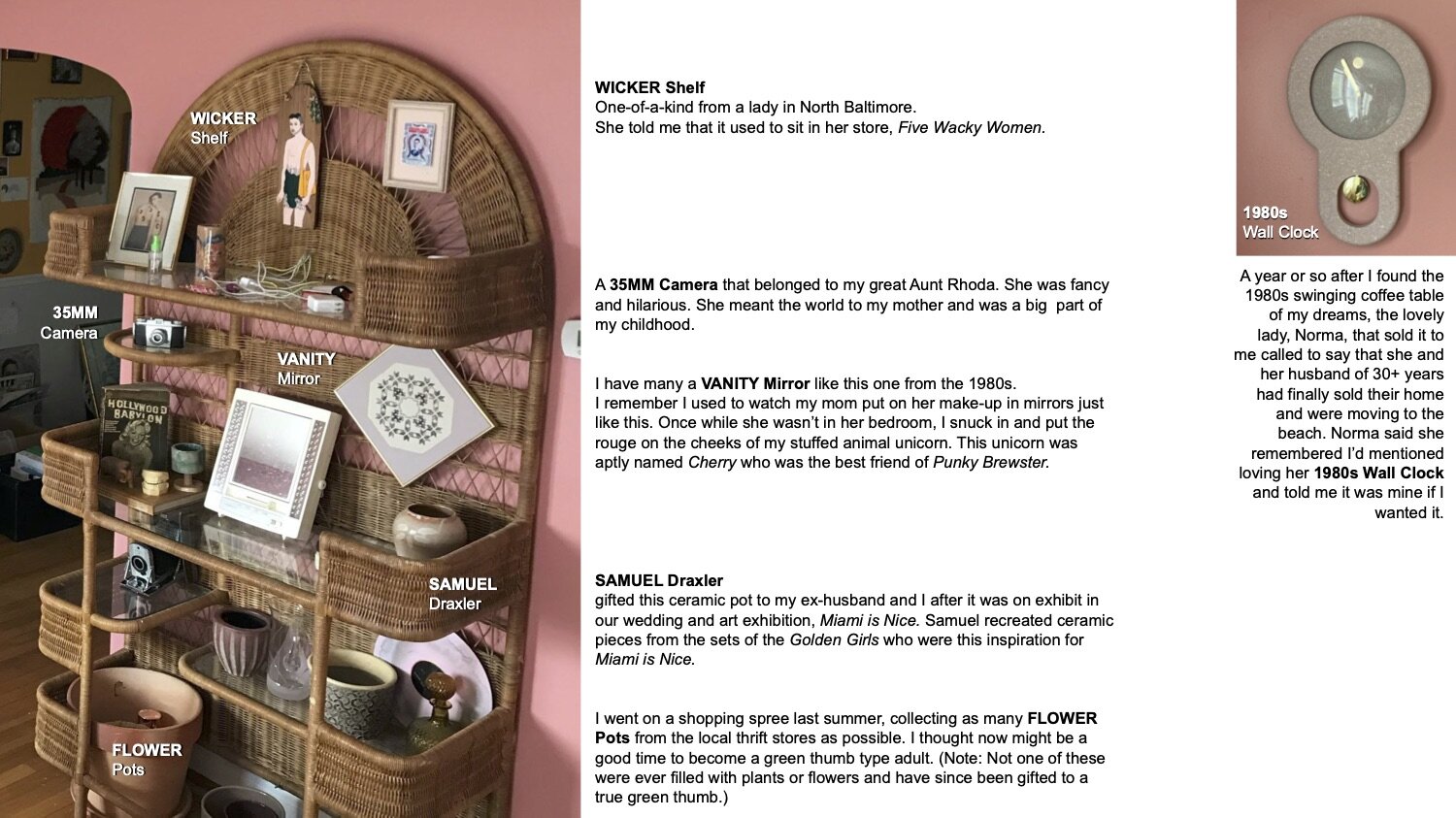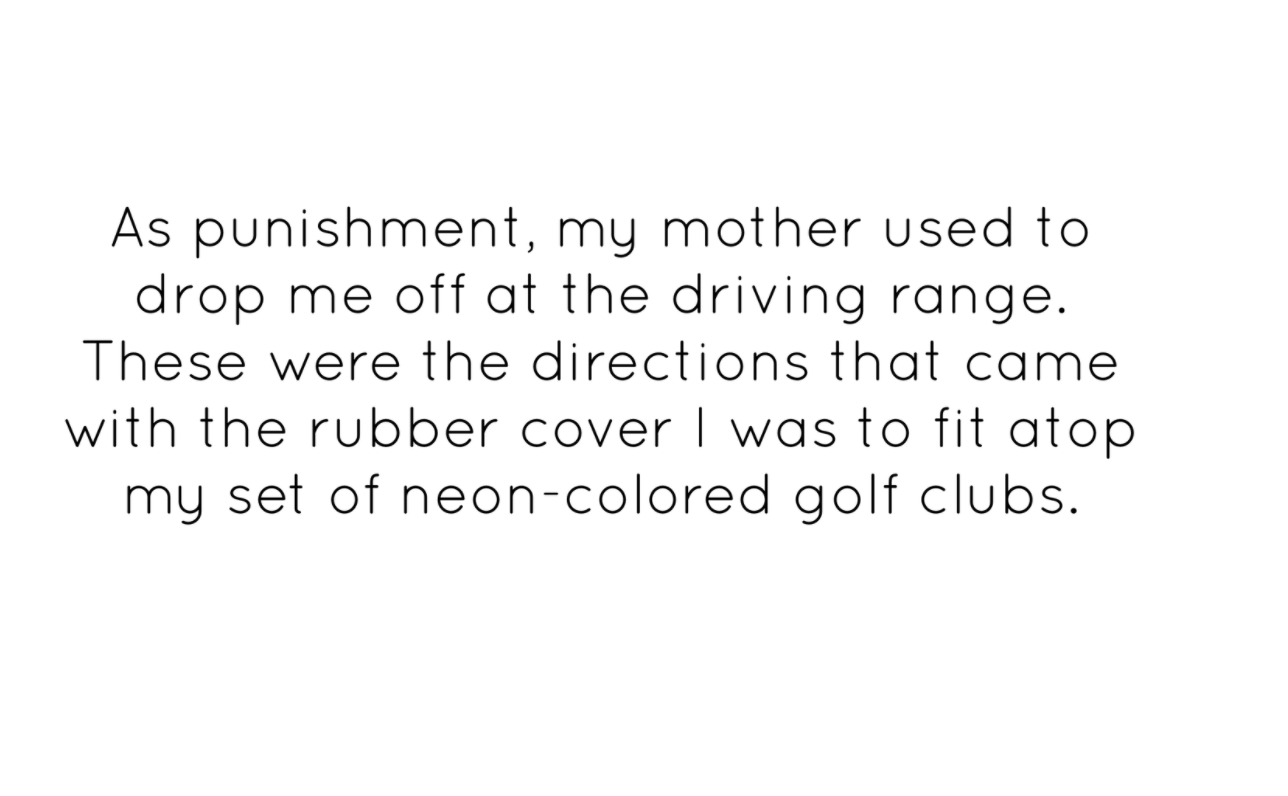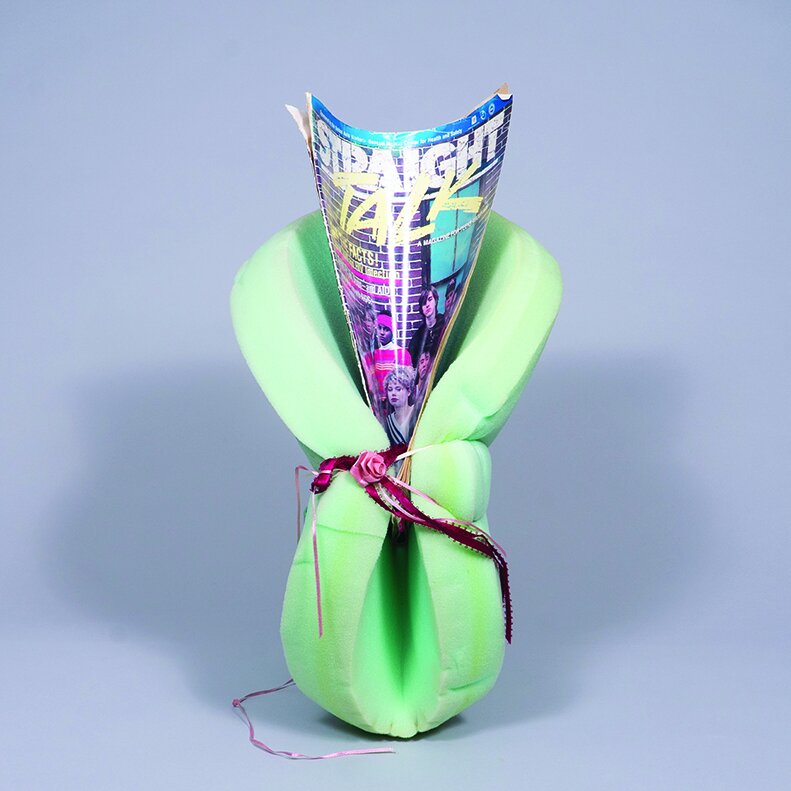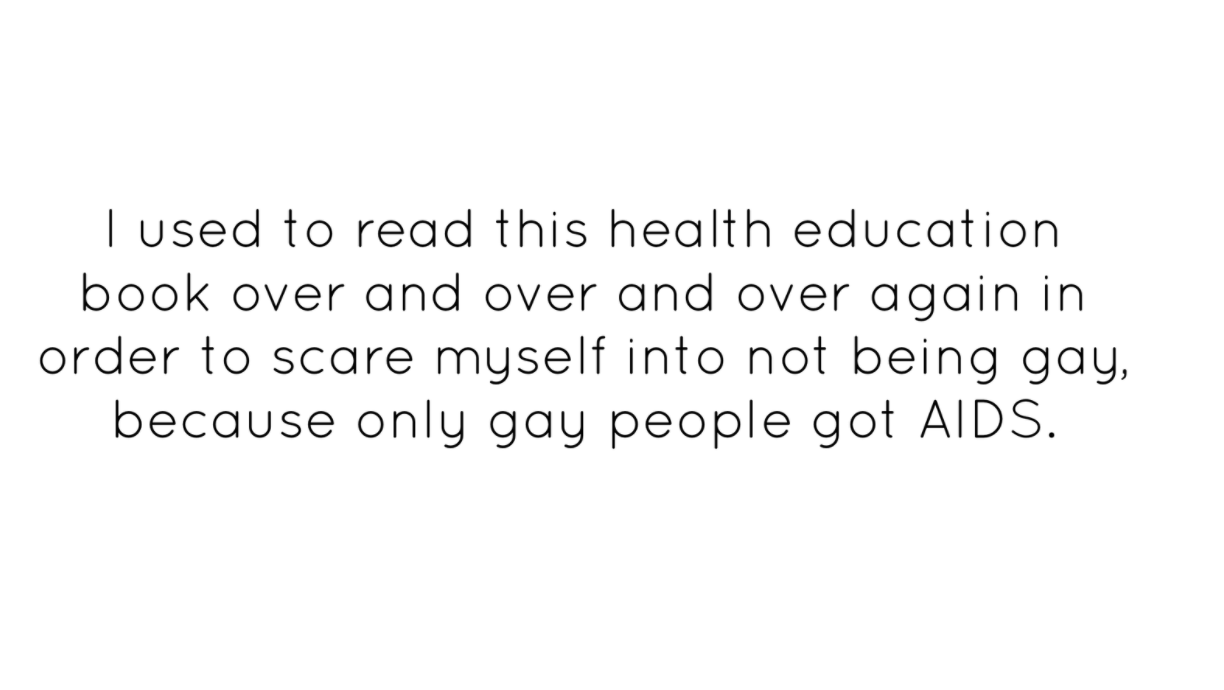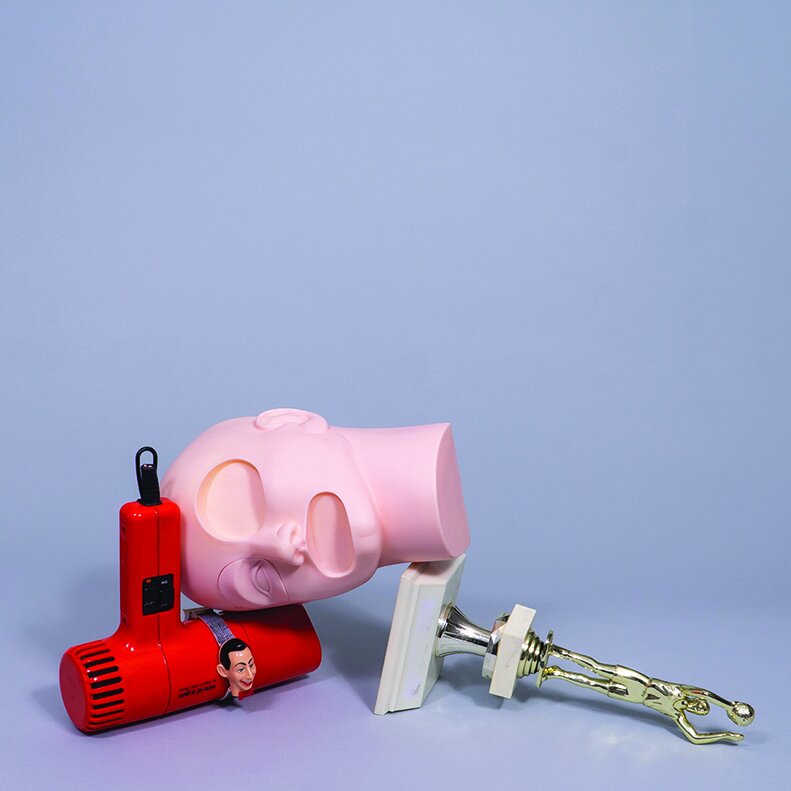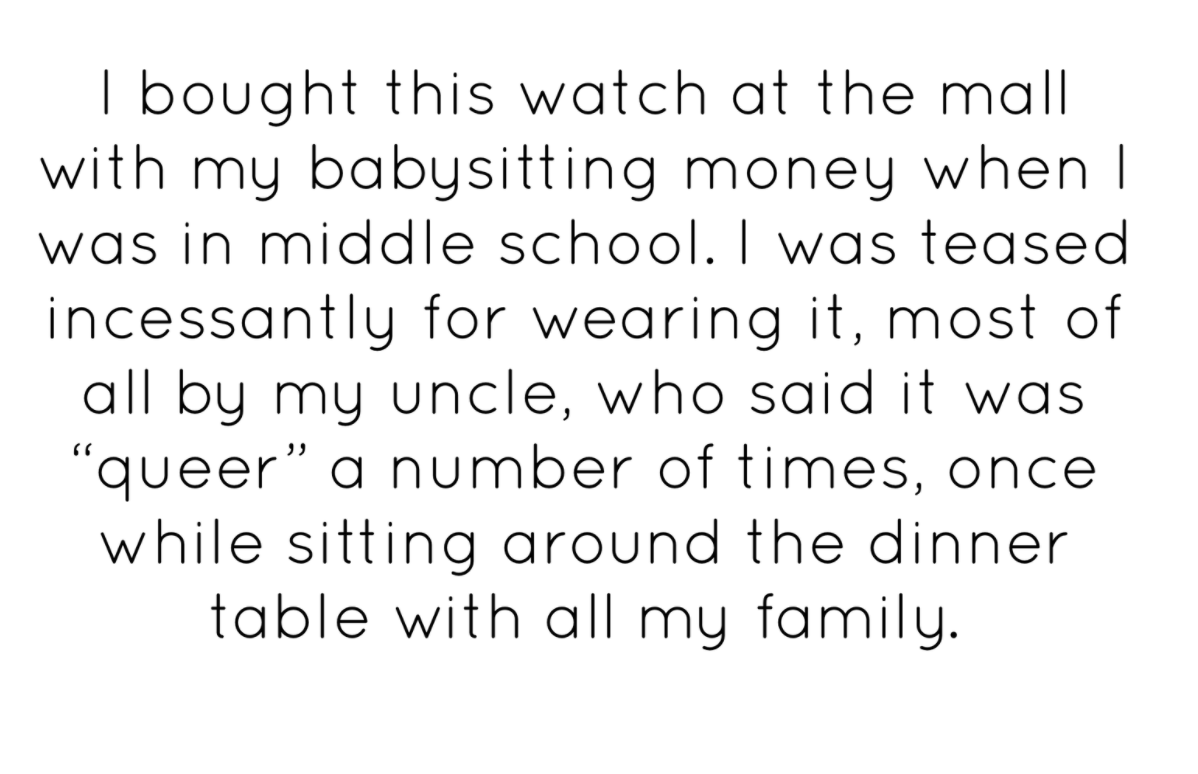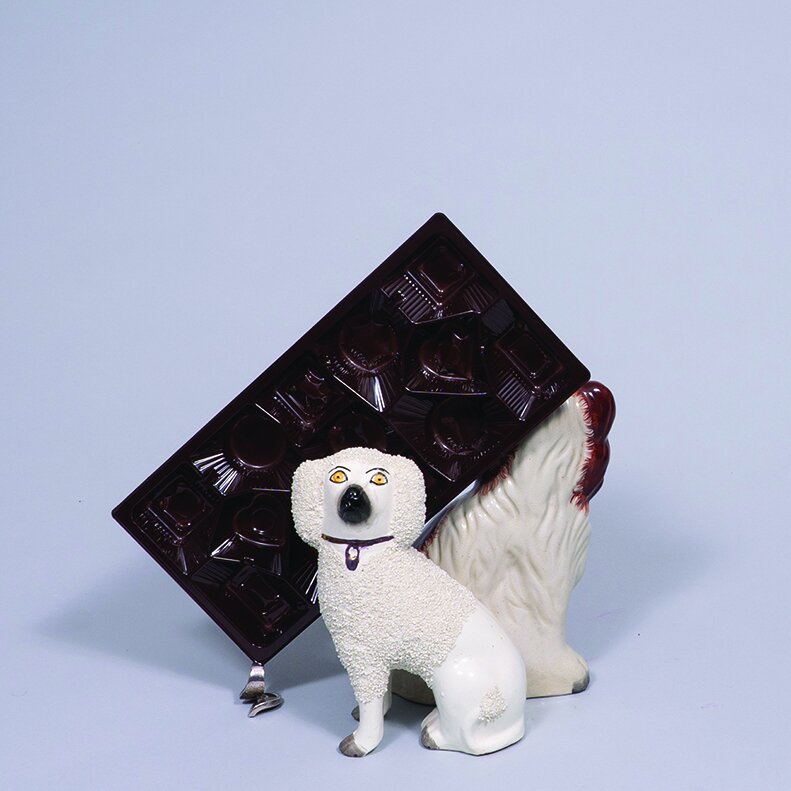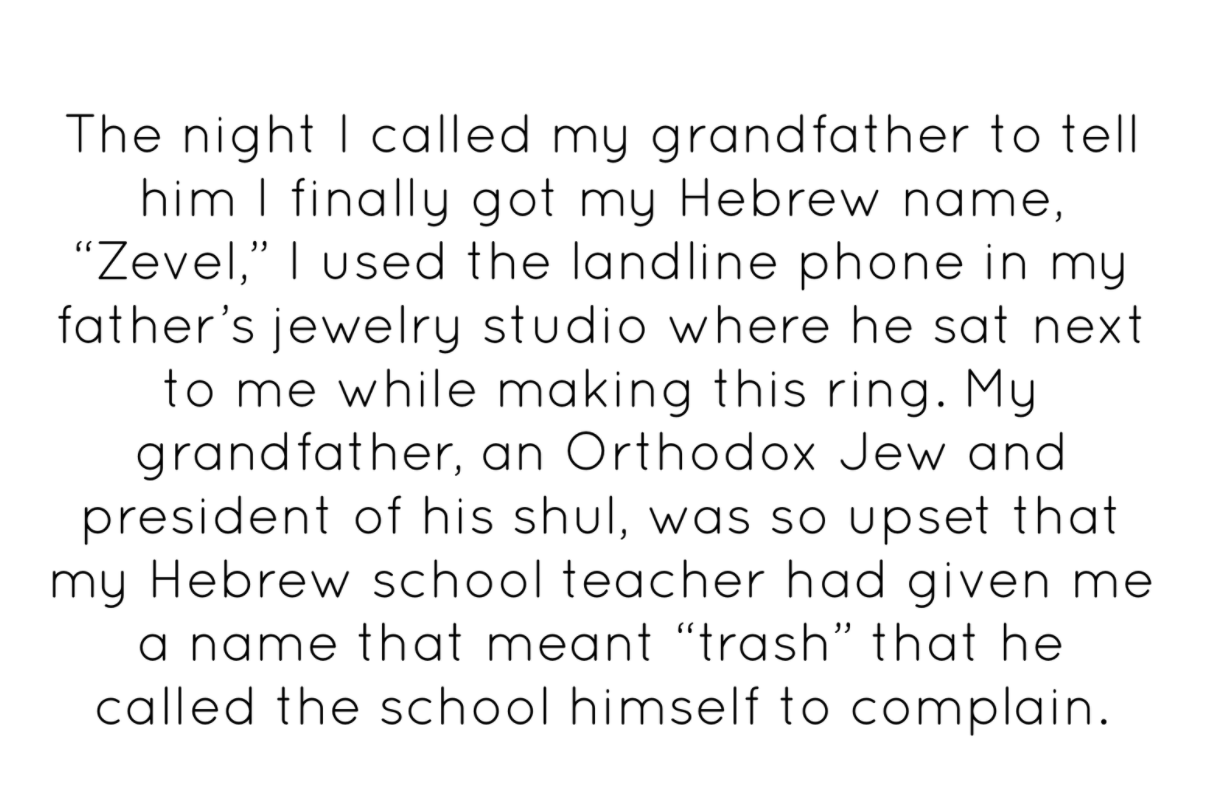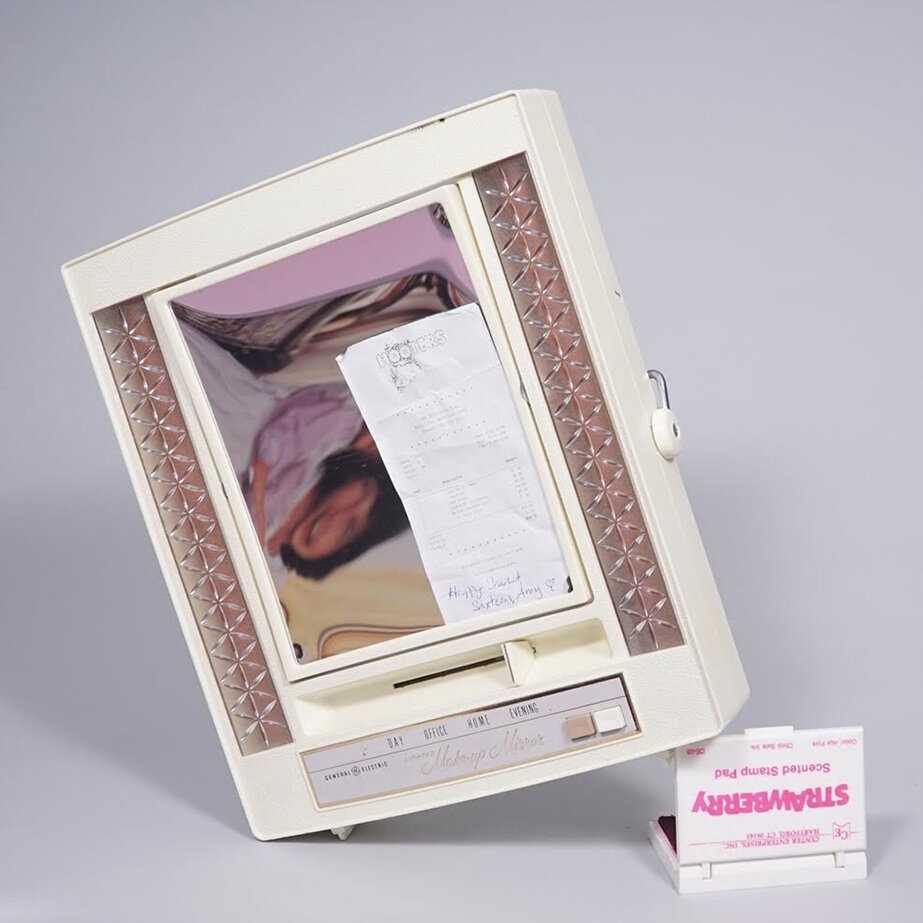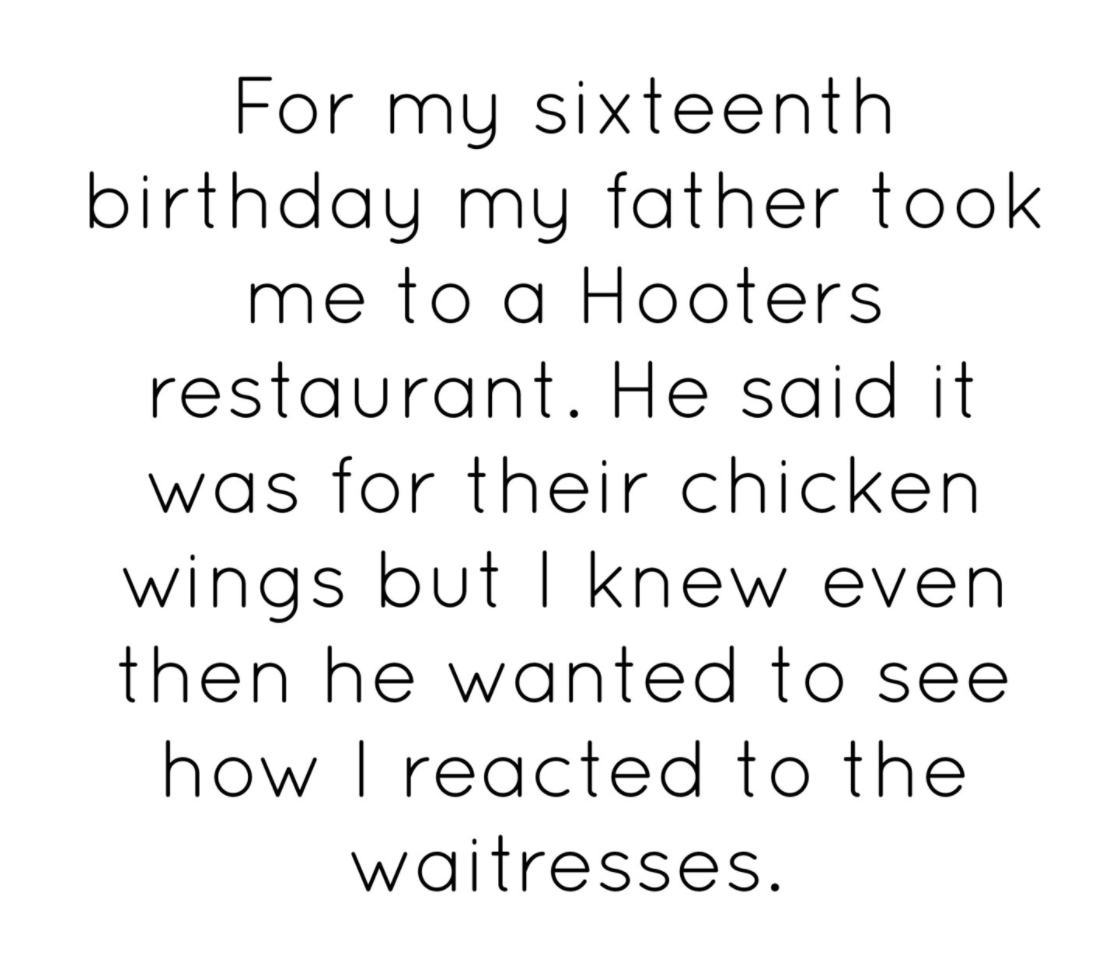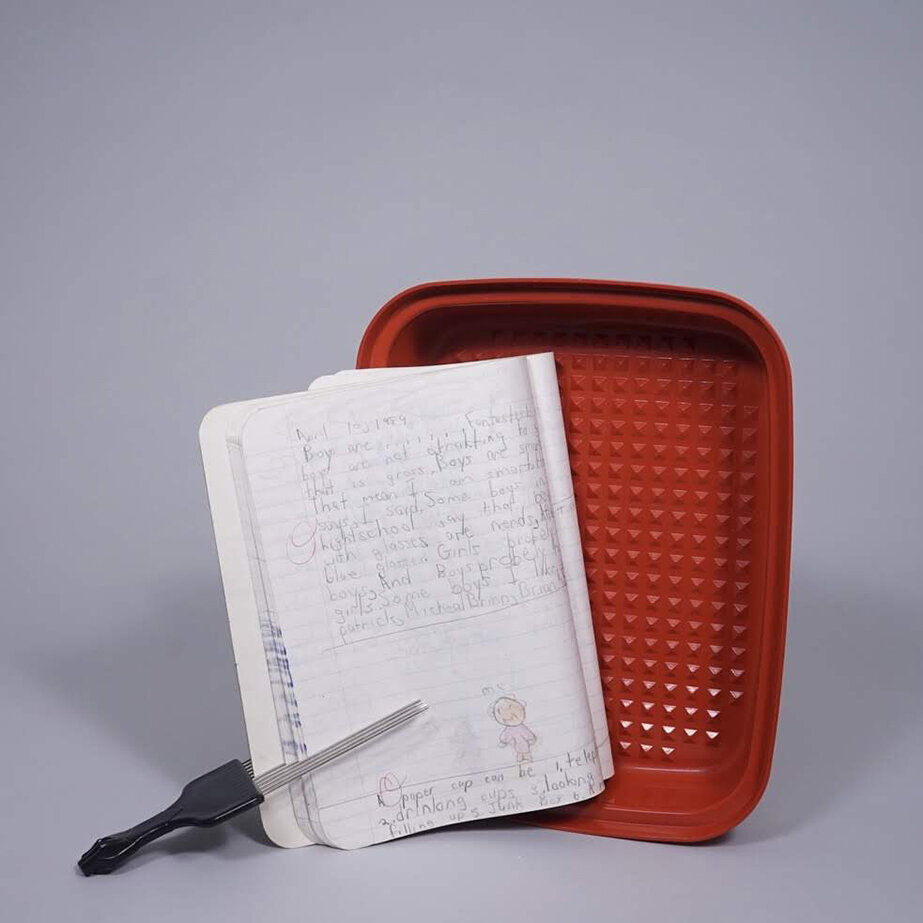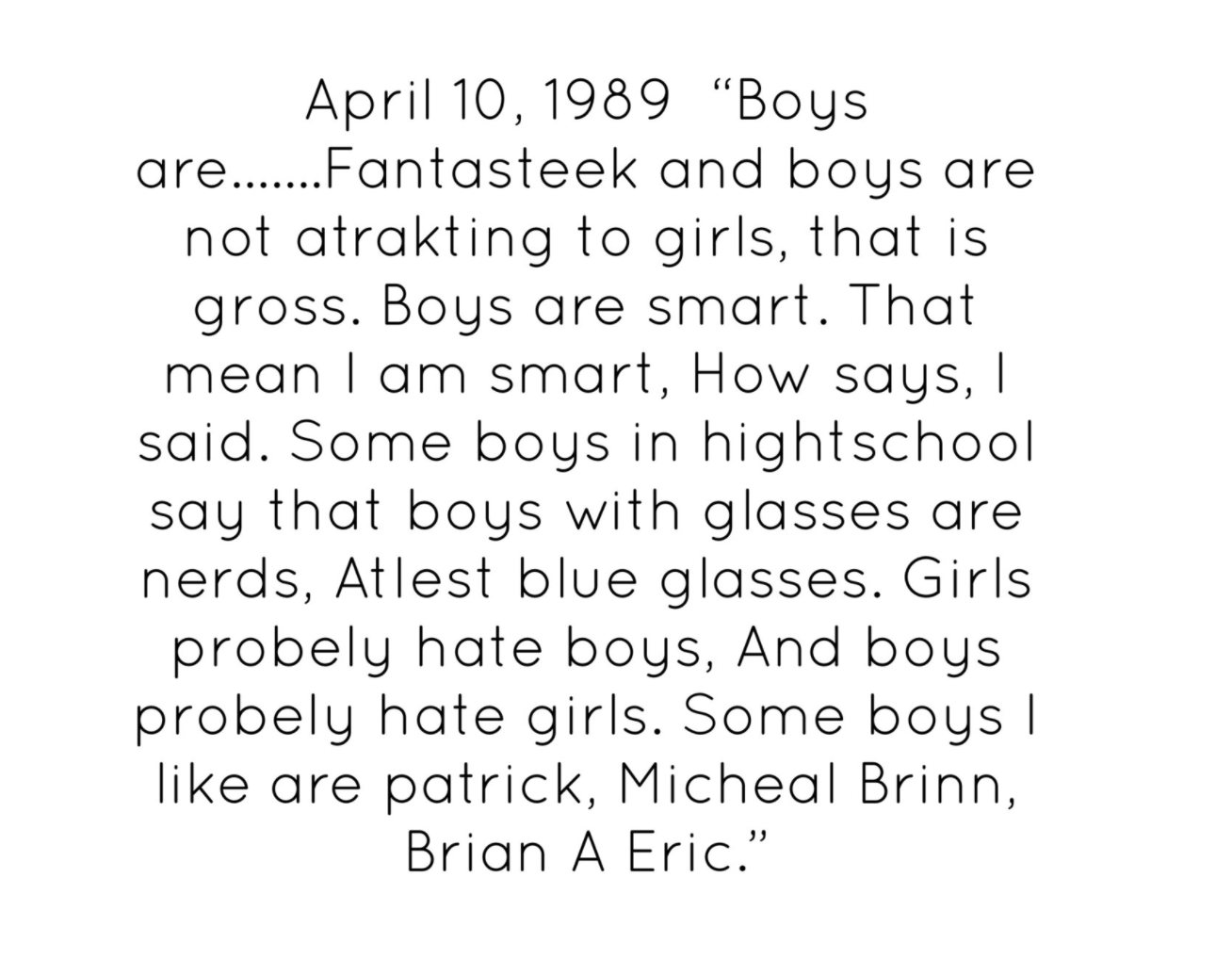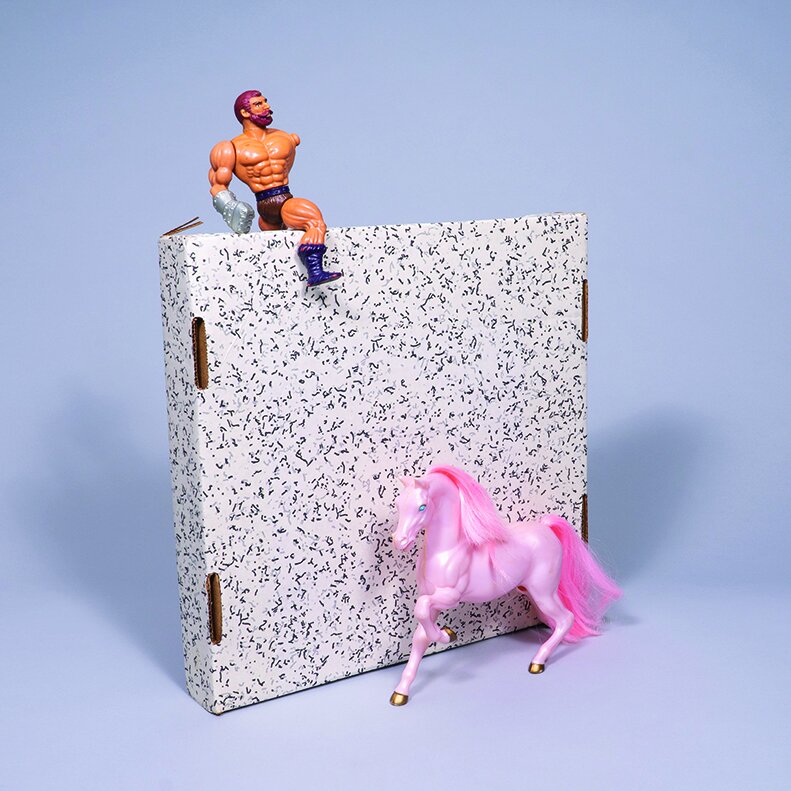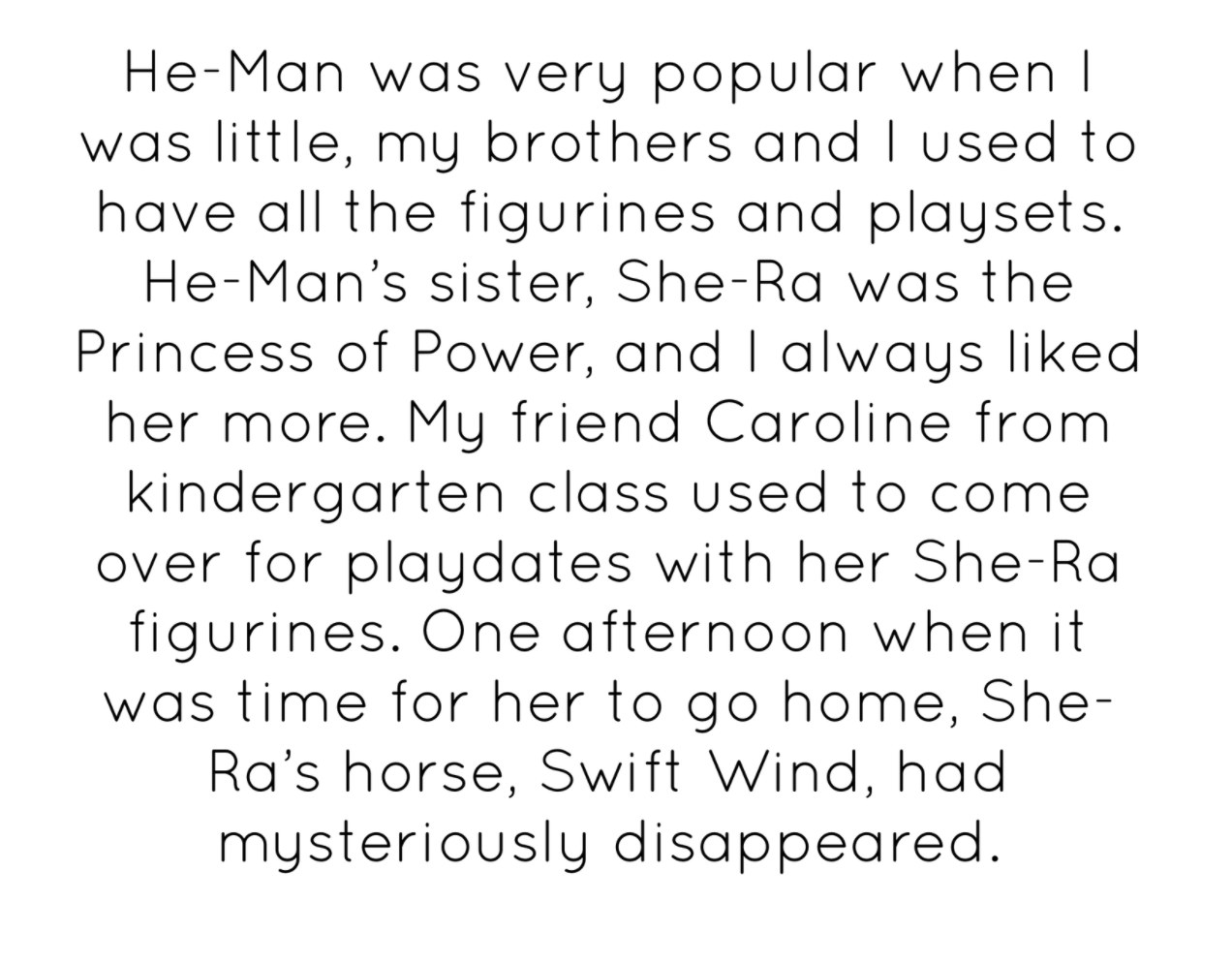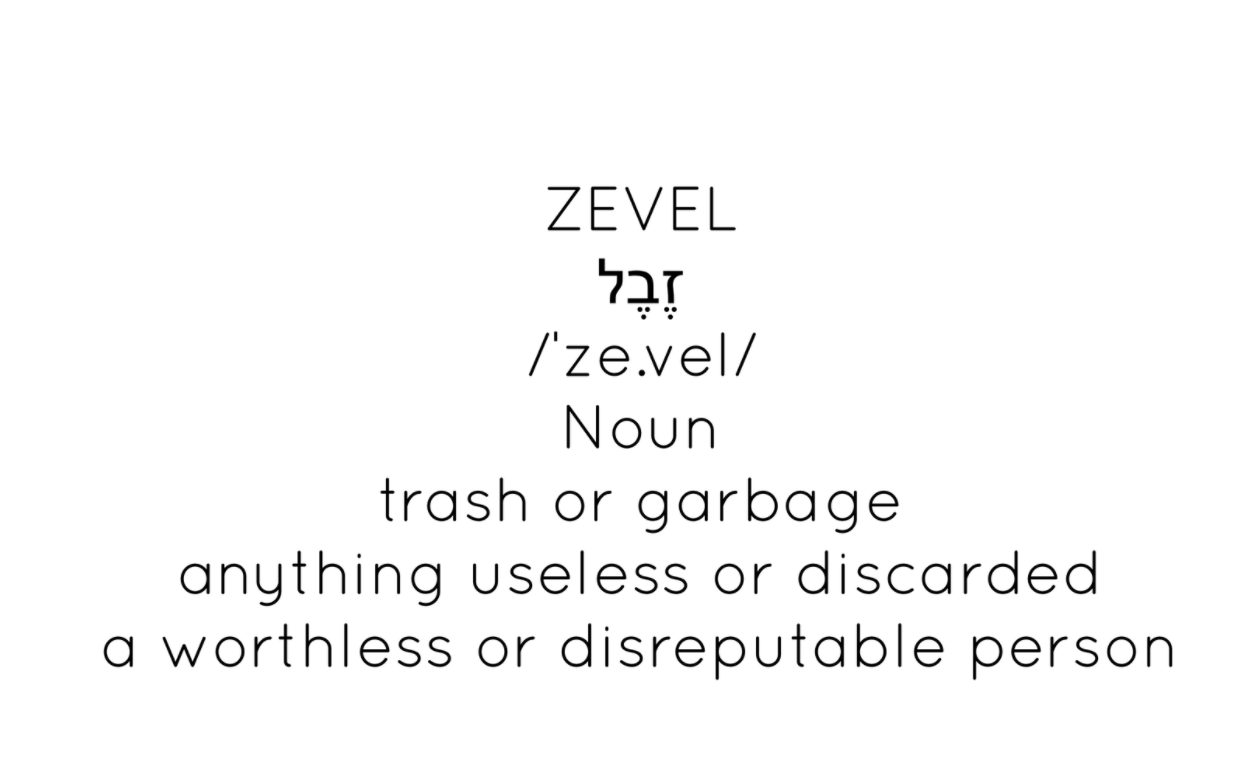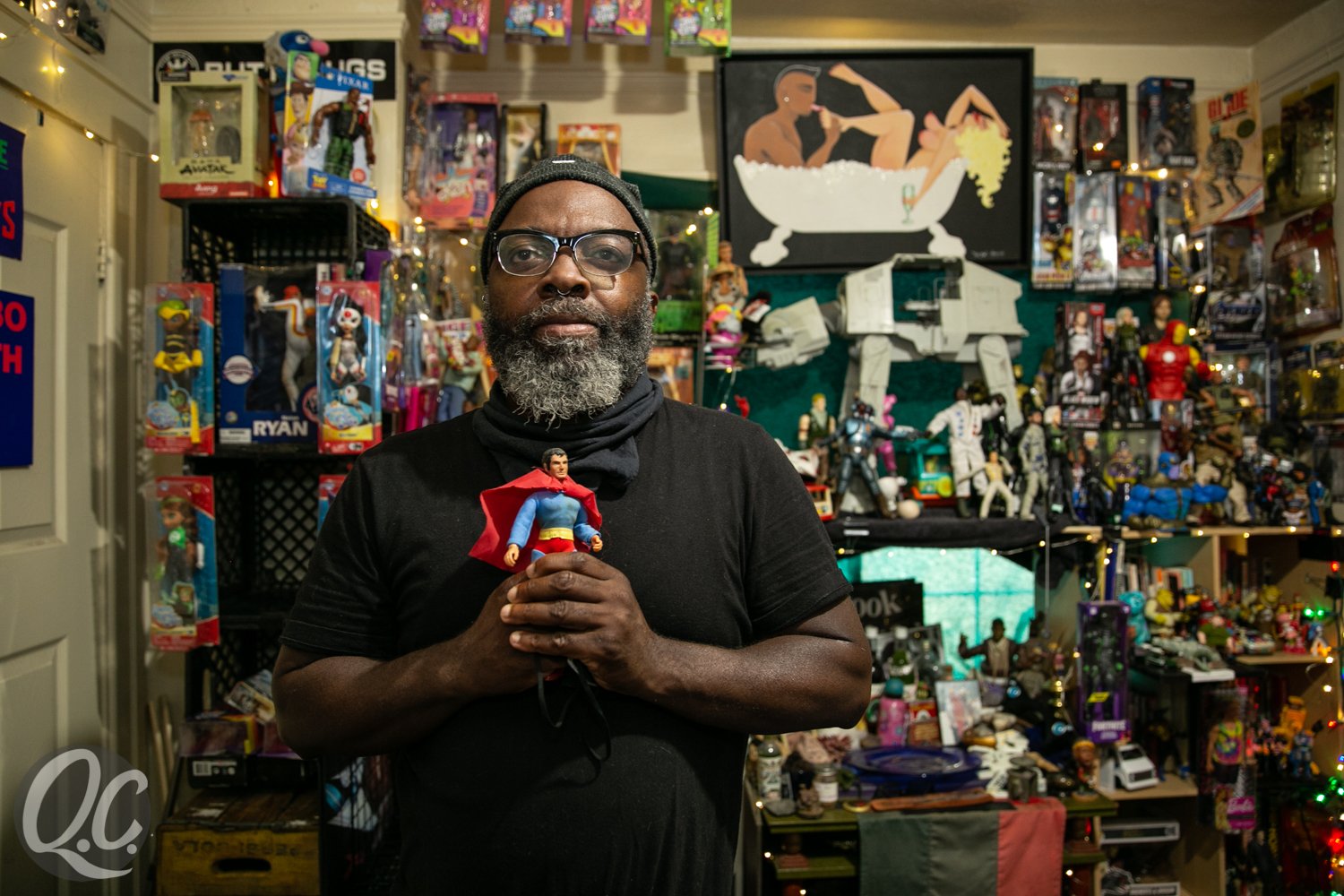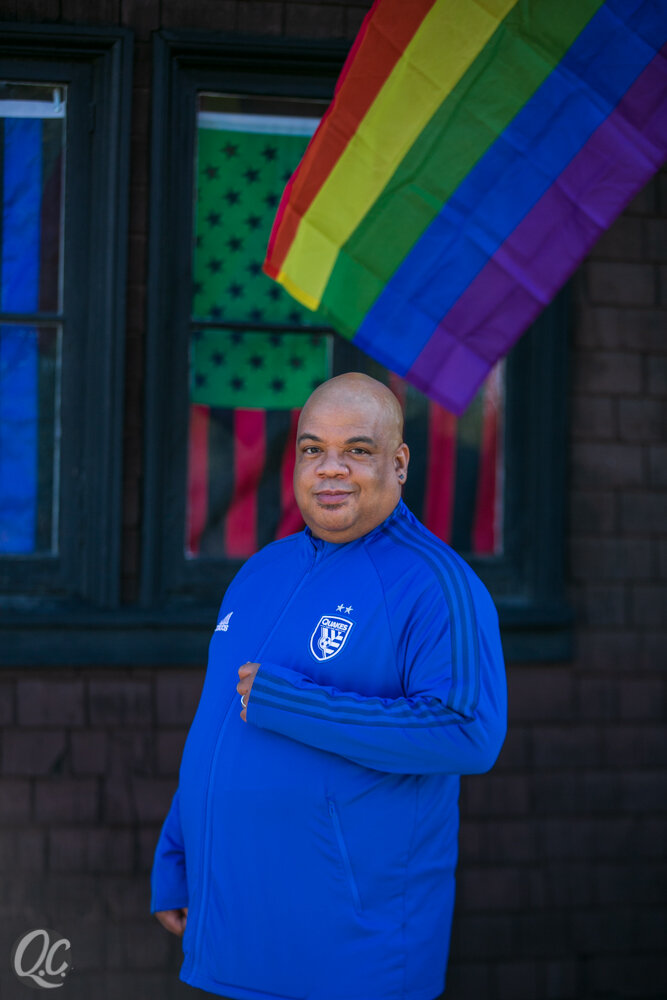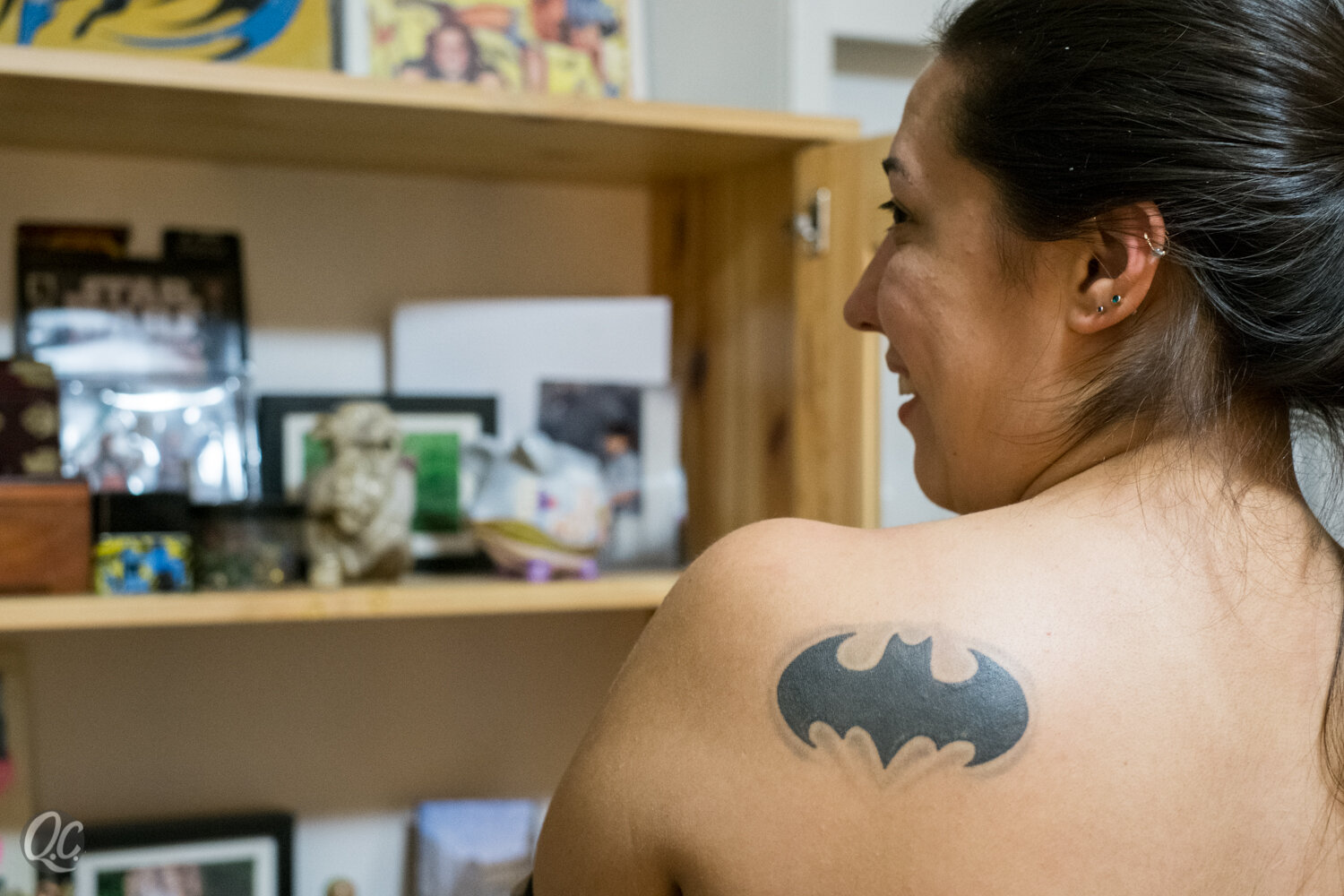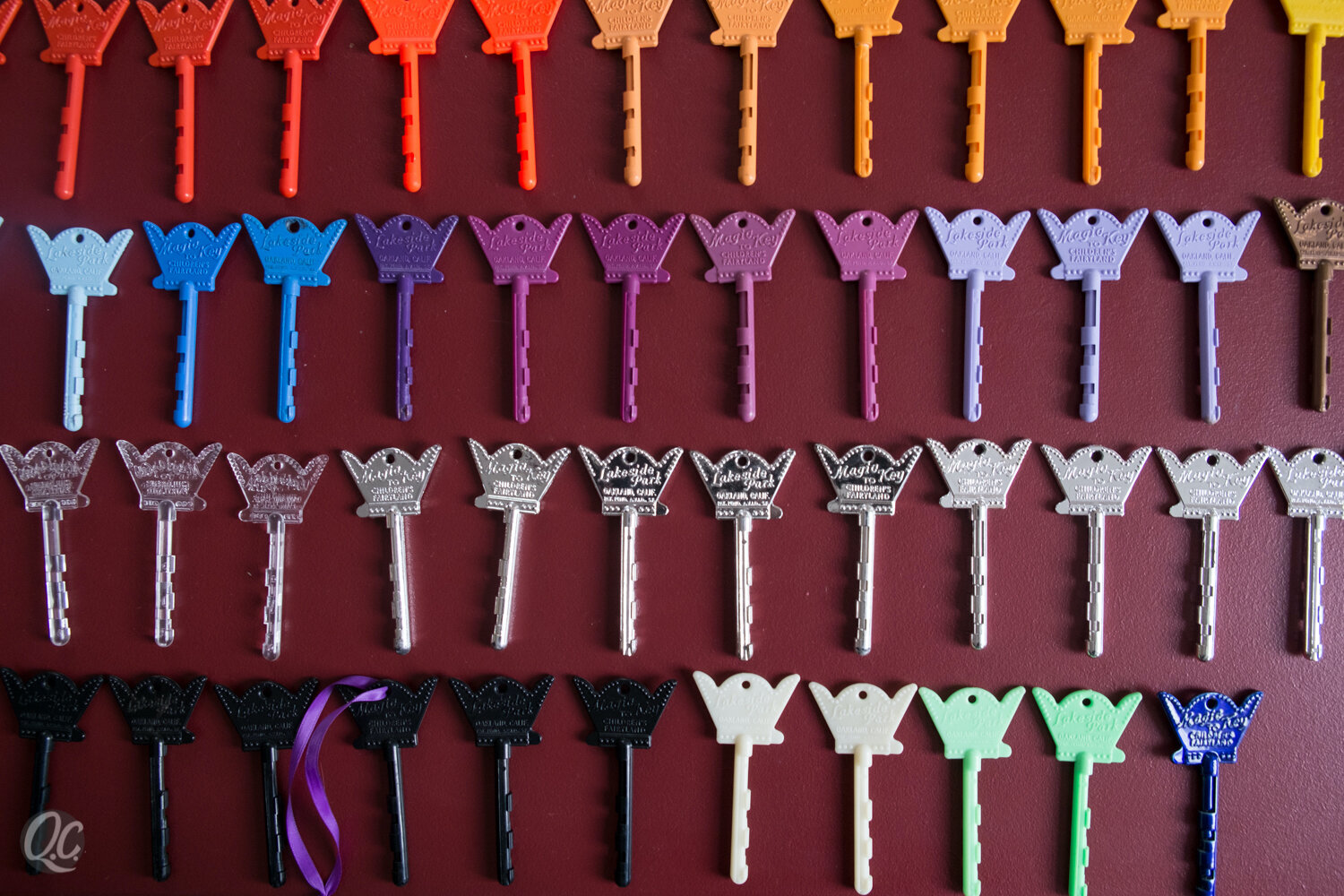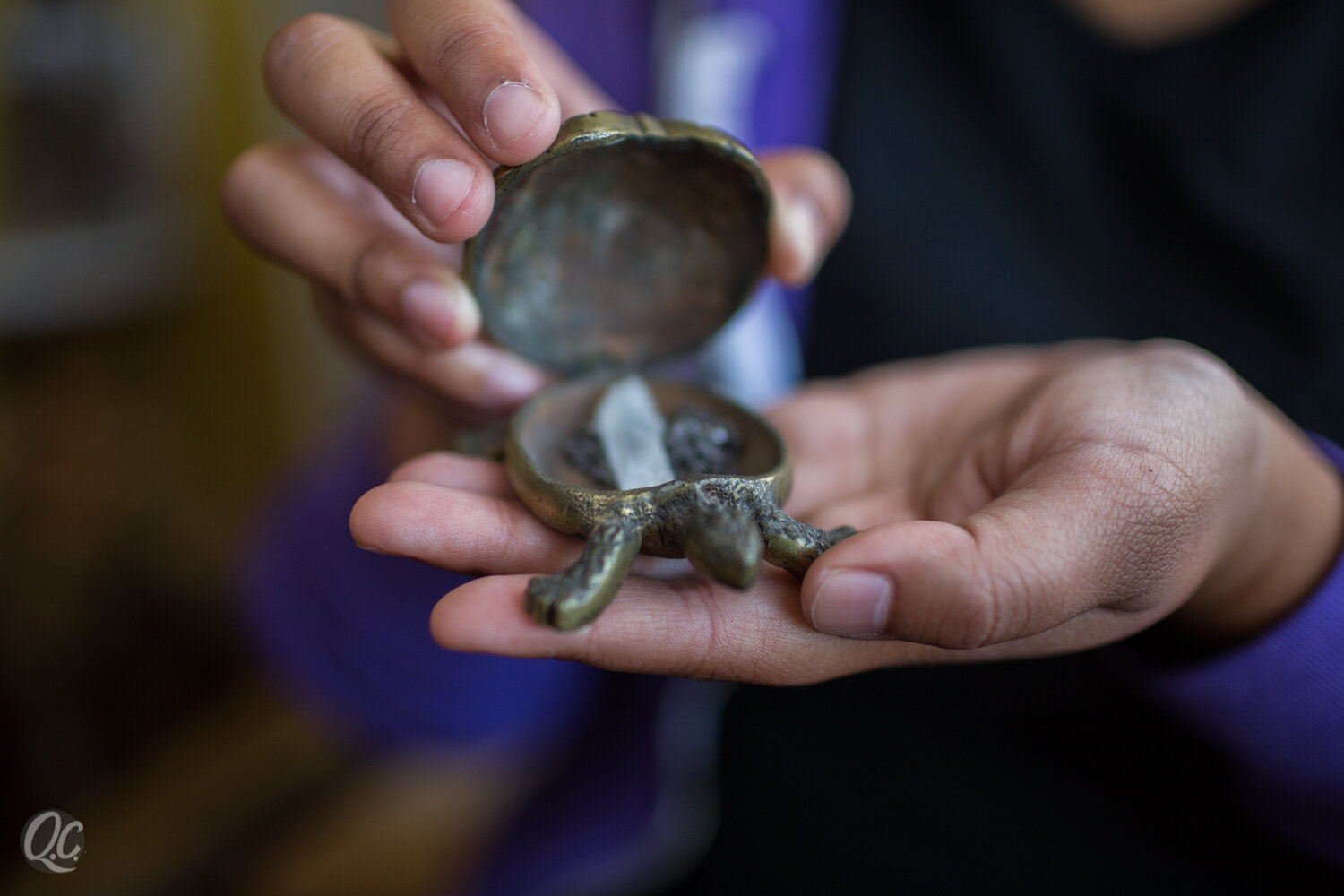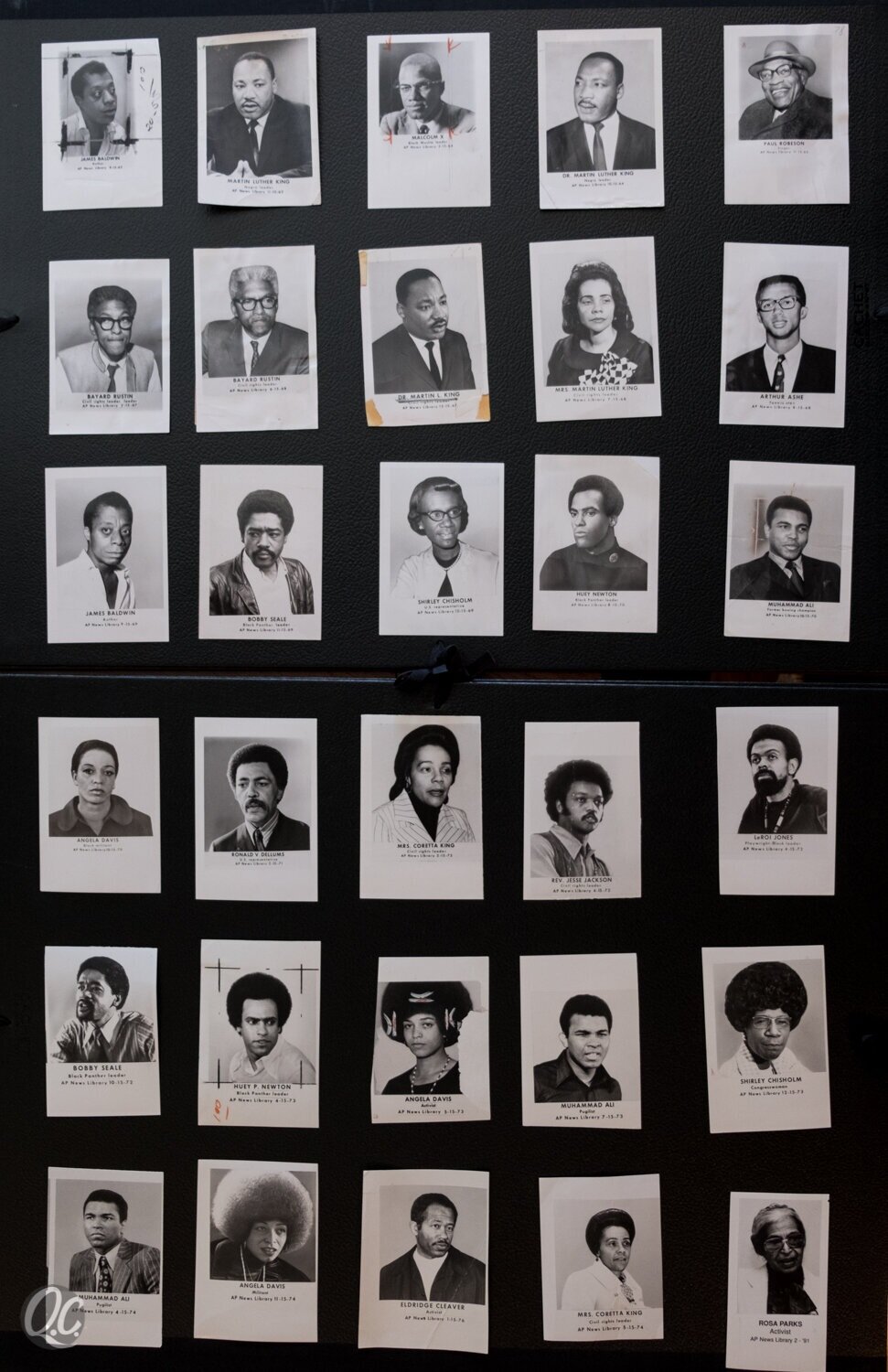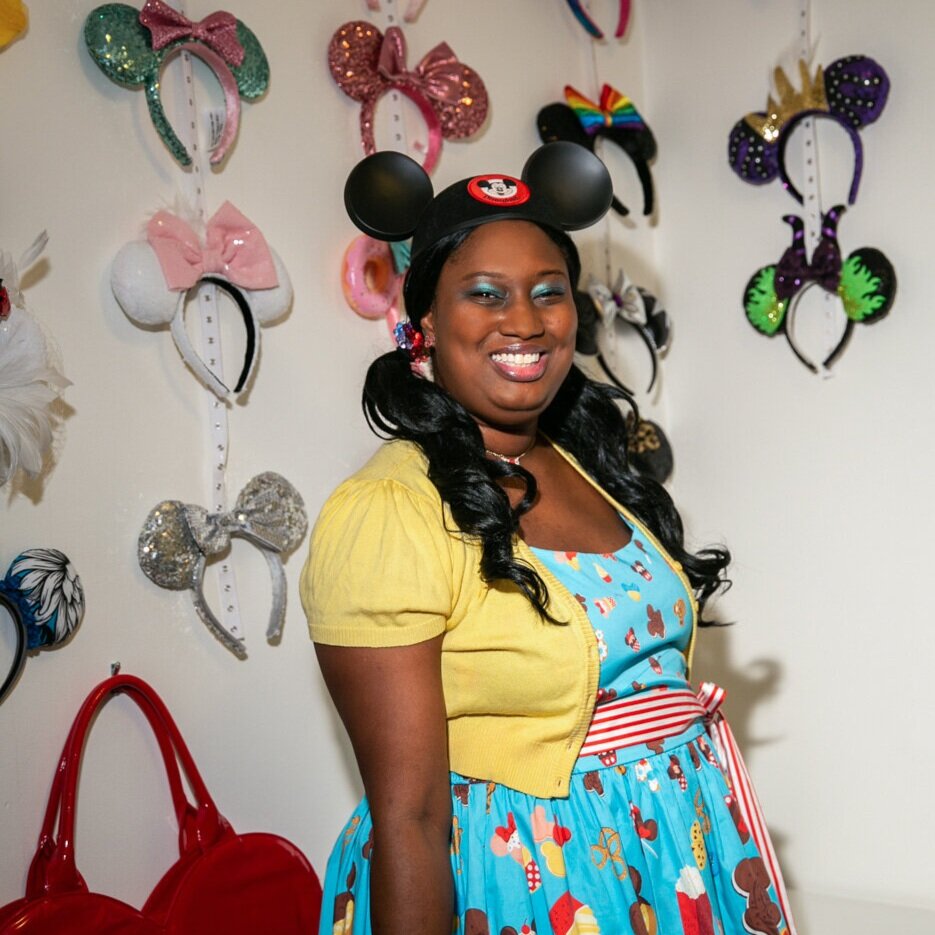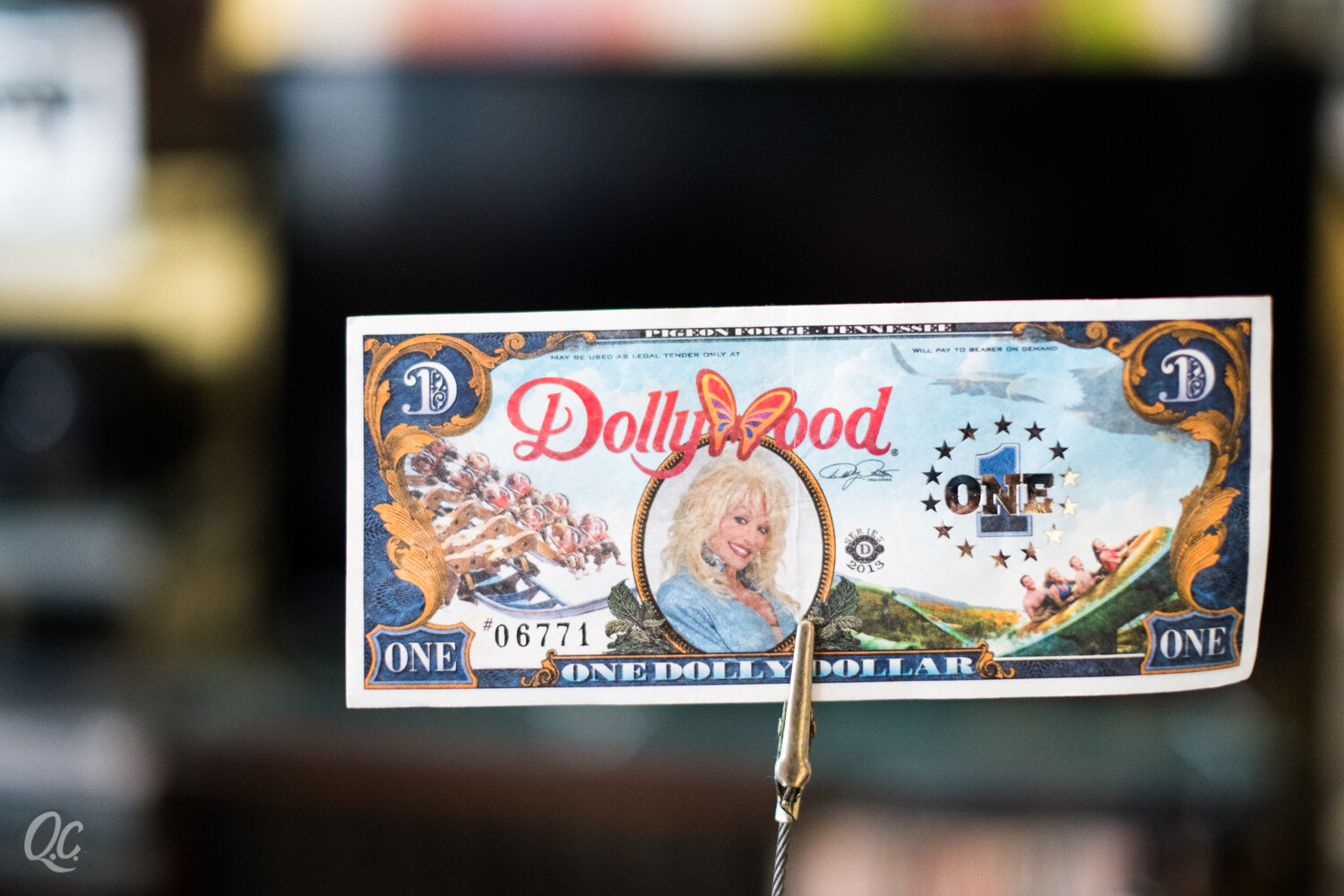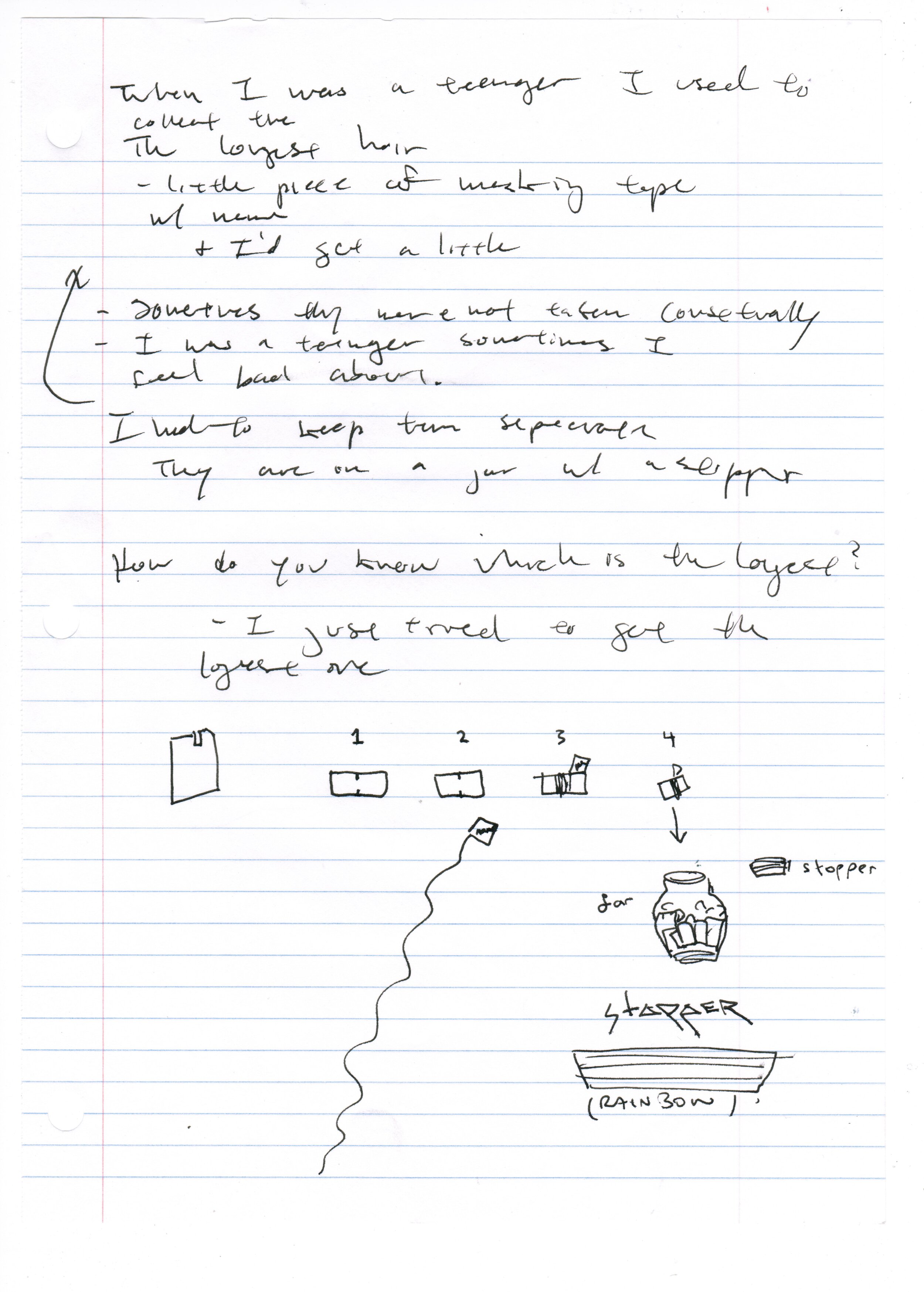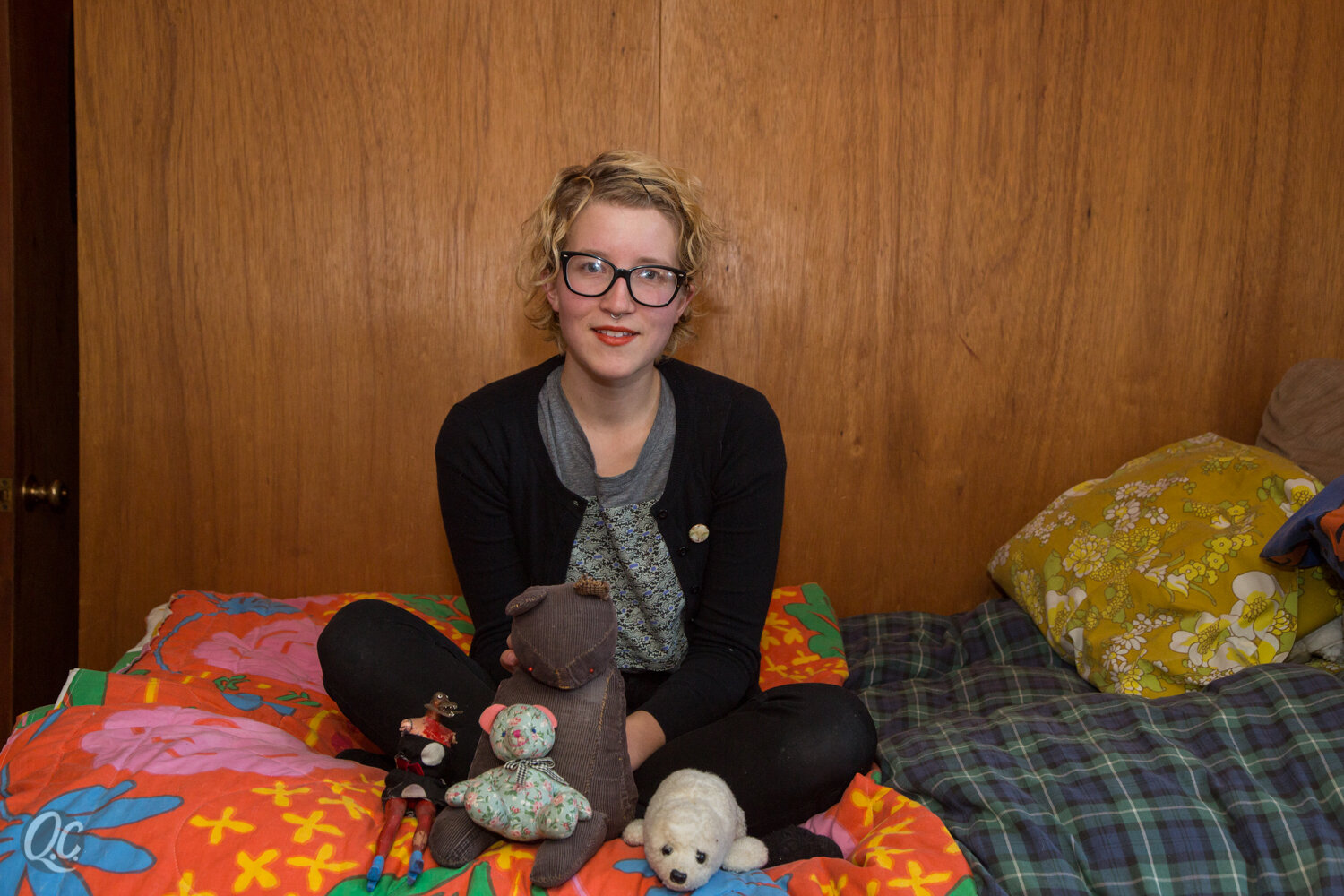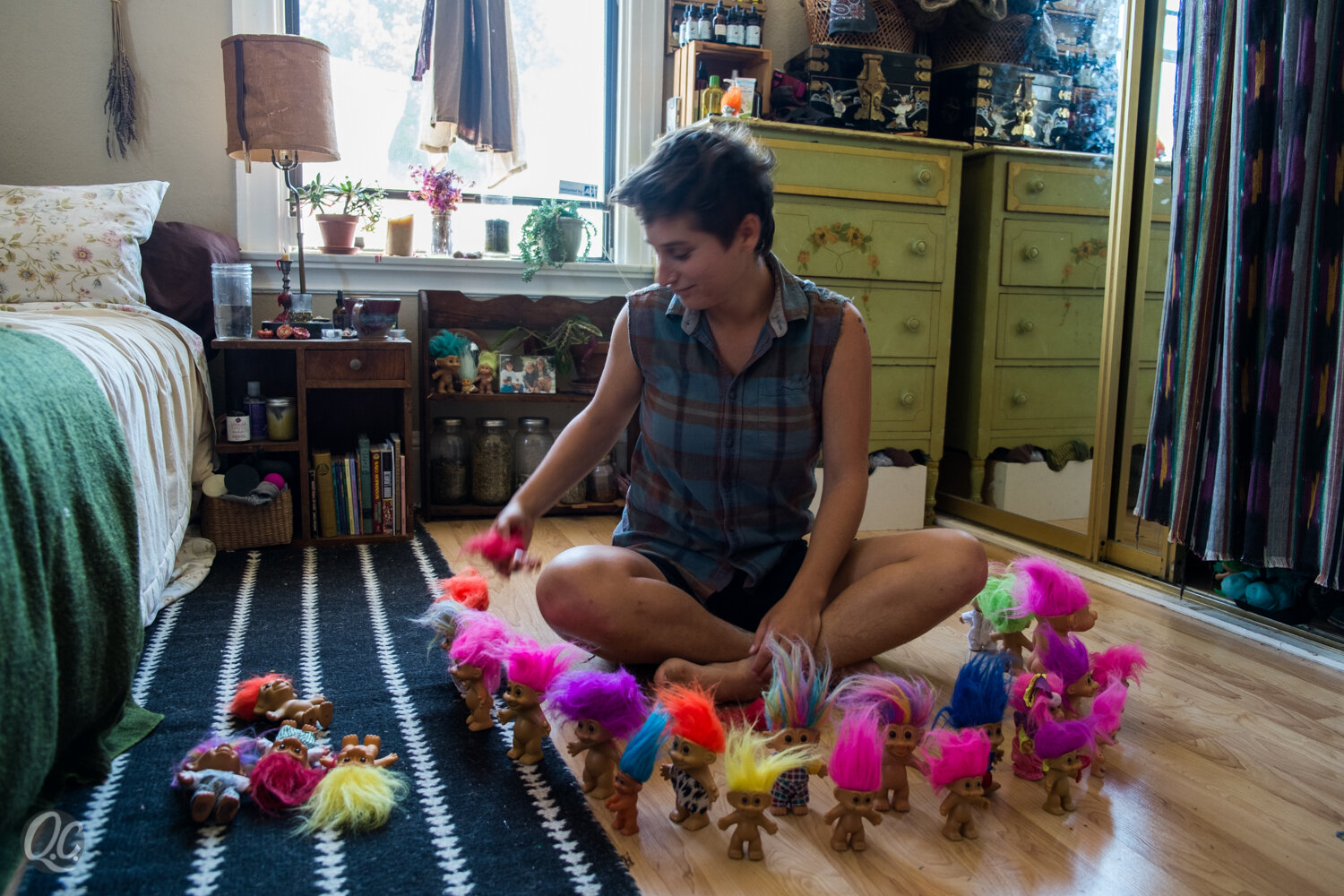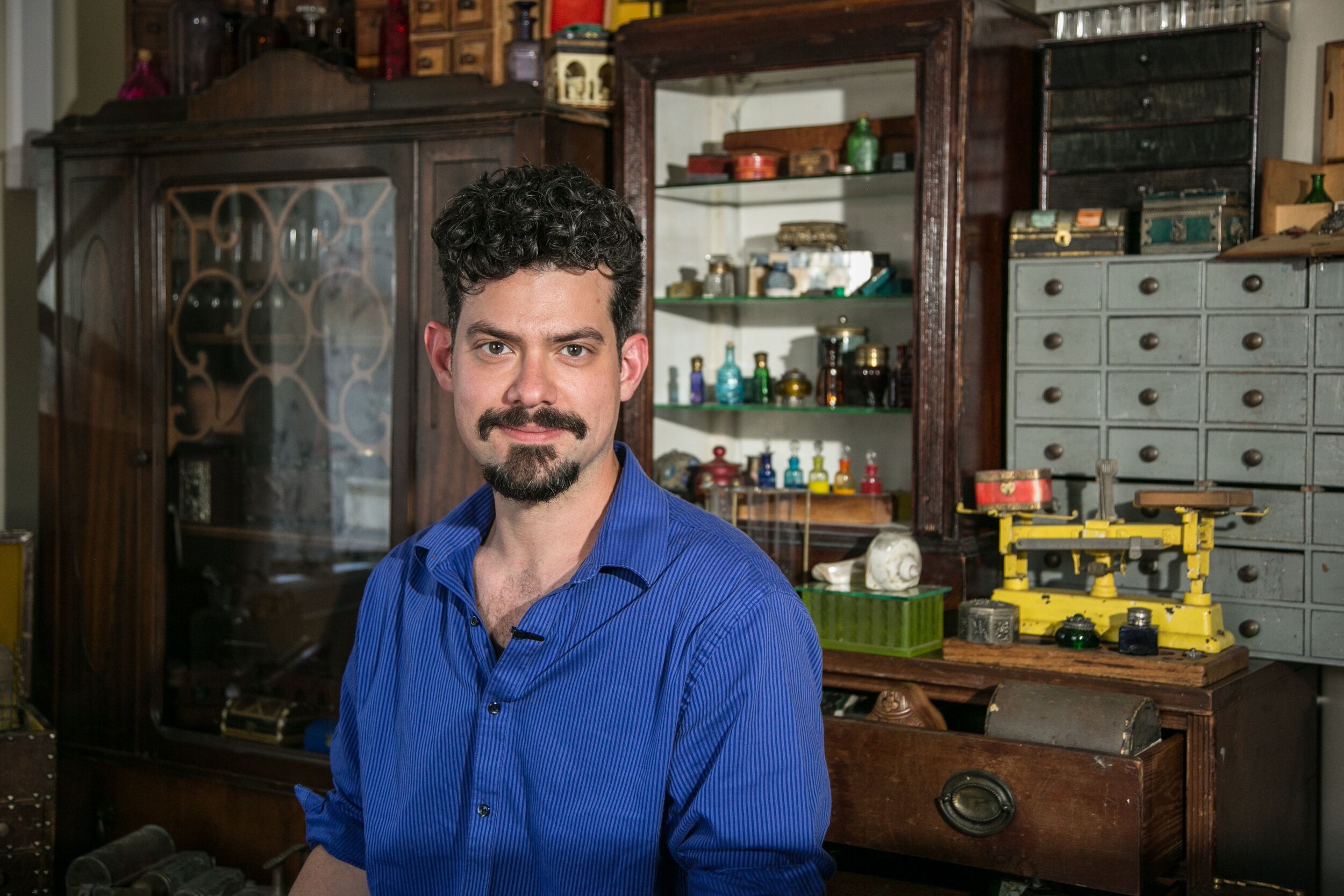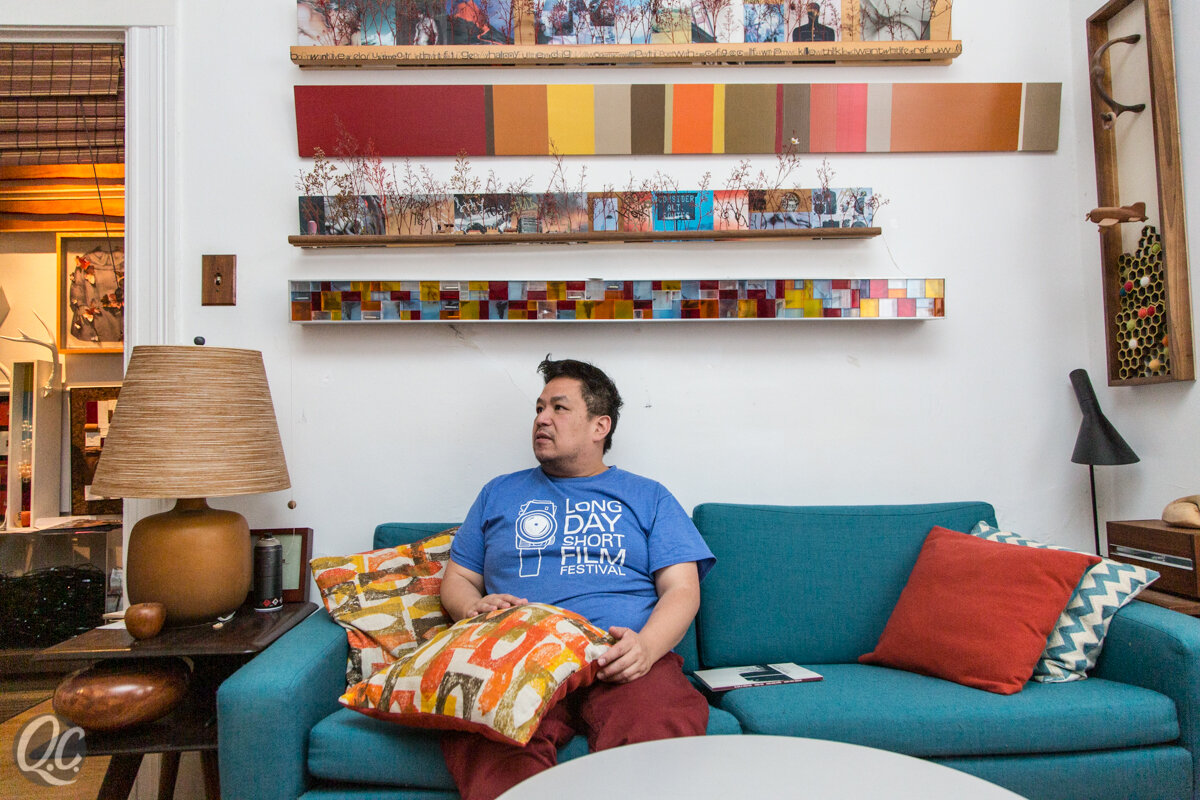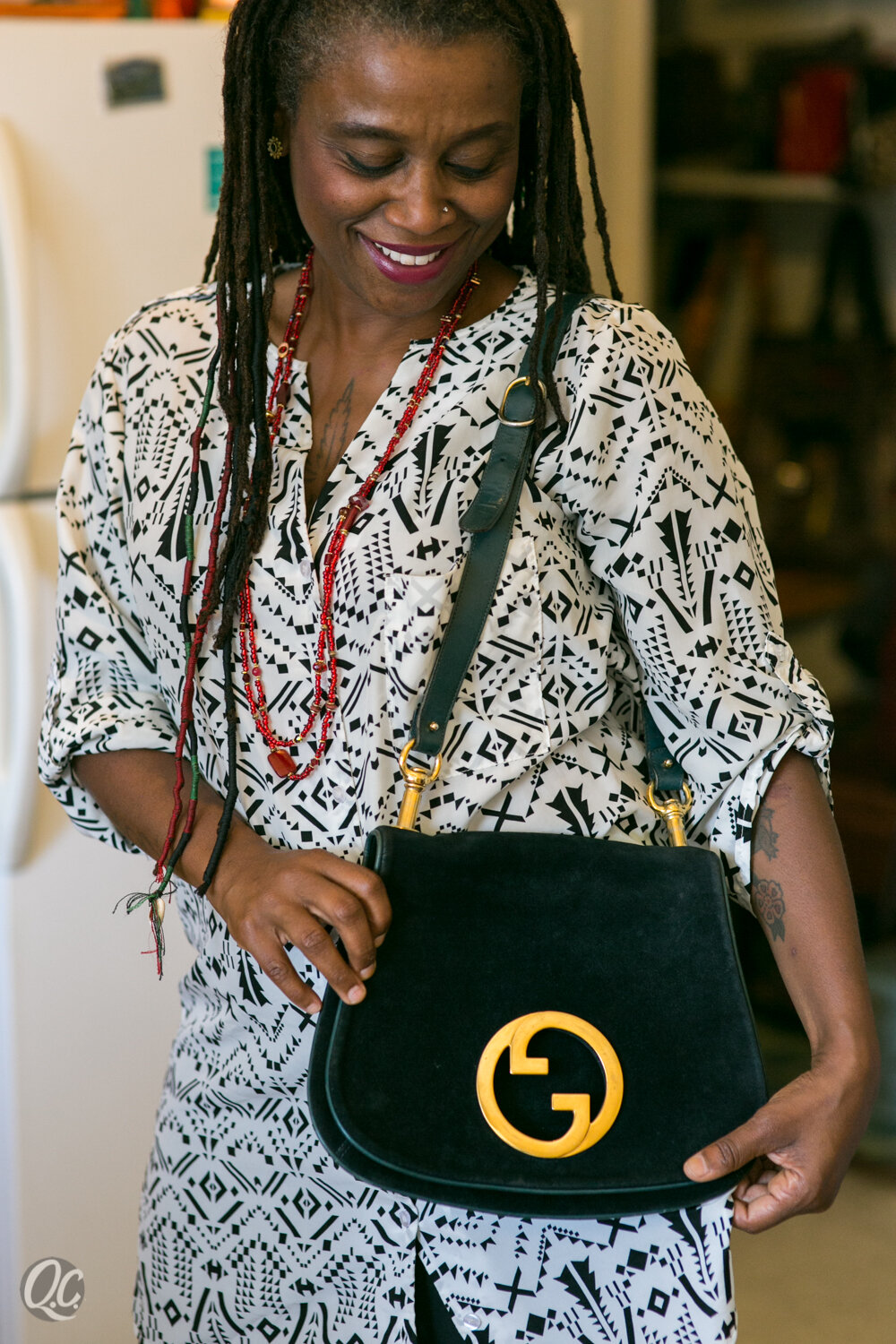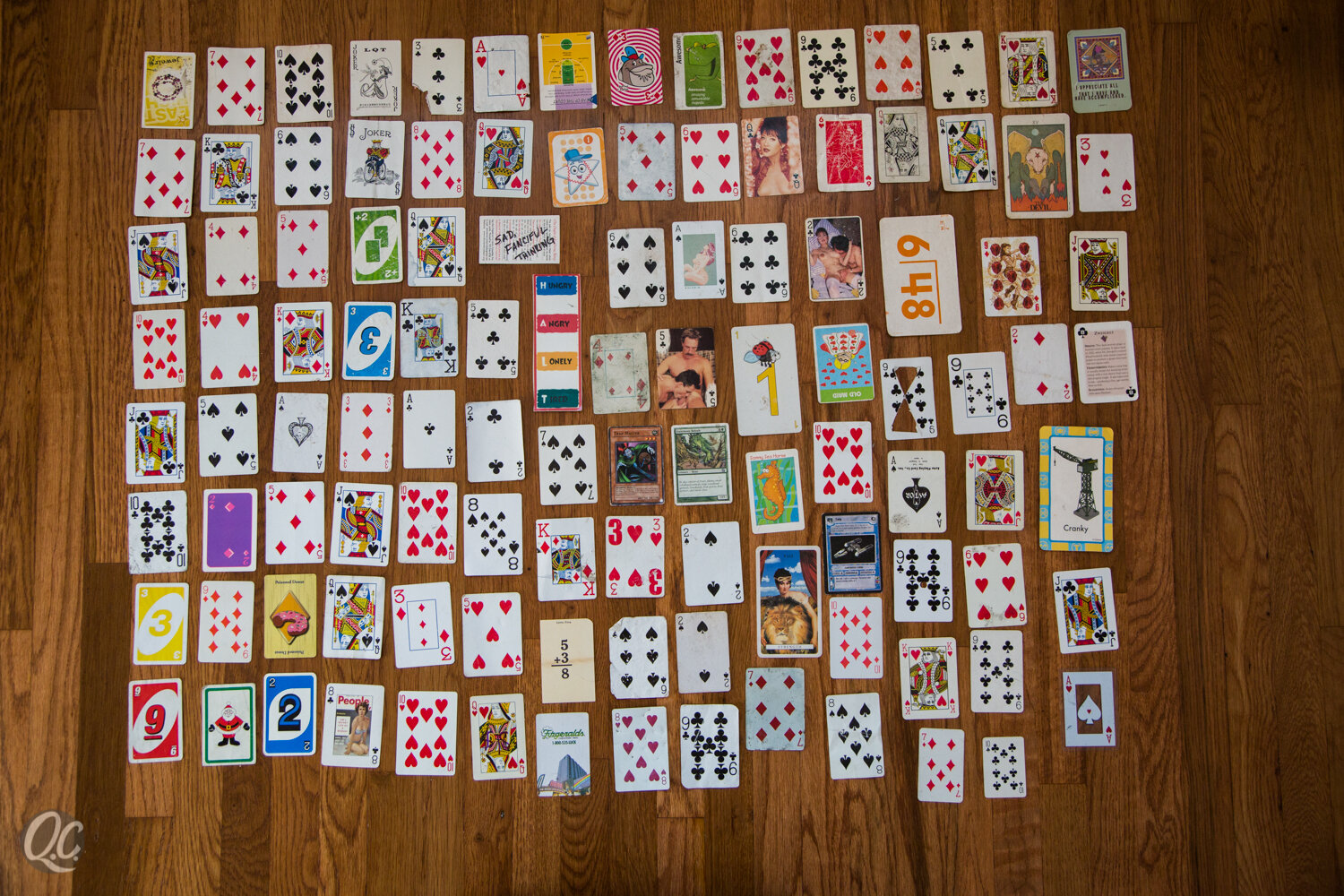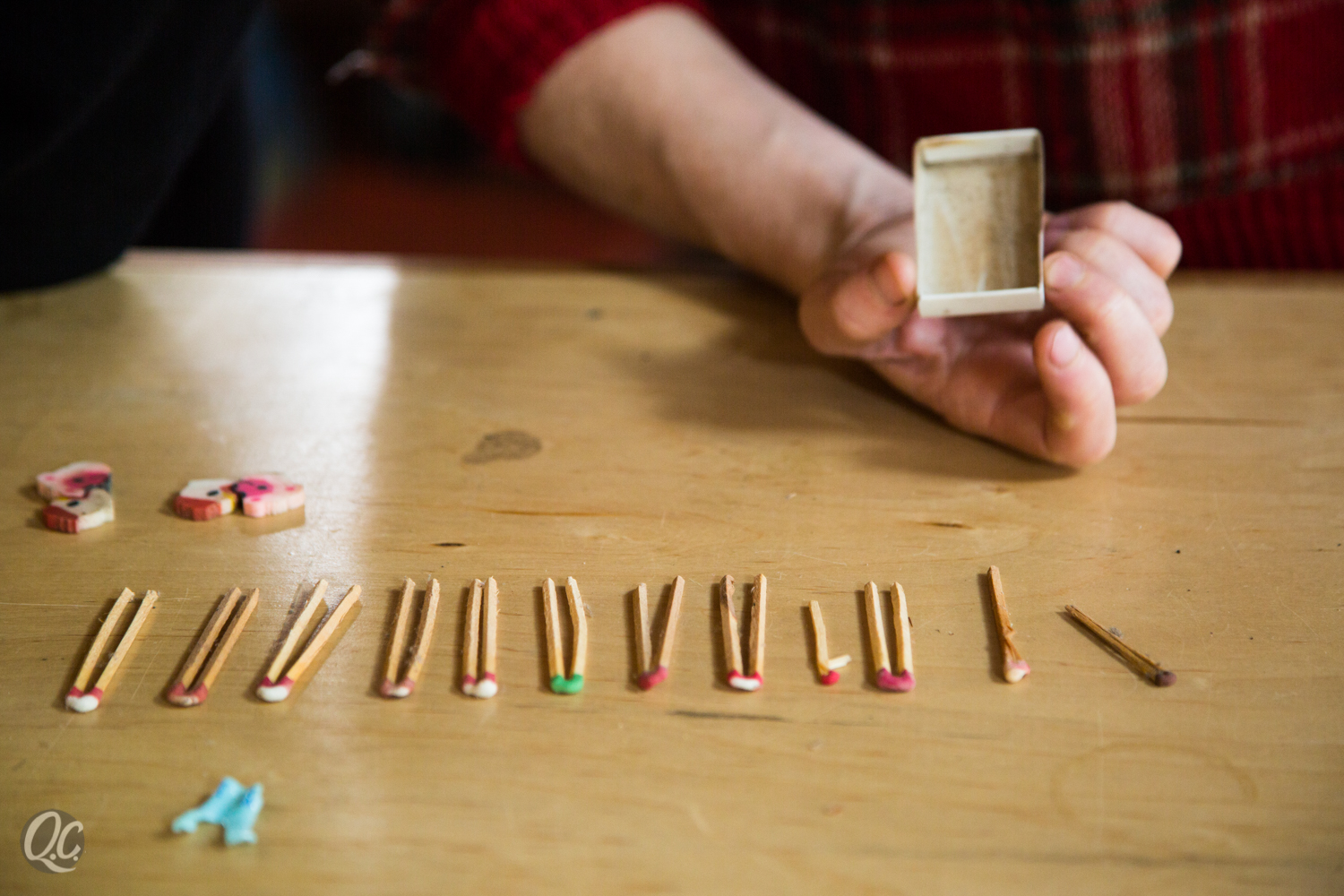Zachary Z. Handler & The Things We Keep
Art During Pandemic
Zoe: Are you from Baltimore?
Zachary: I've been here long enough. I just say I am. I'm from Maryland, originally from, Gaithersburg, Maryland. About an hour, maybe 15 from here.
Zoe: And you work in healthcare?
Zachary: My title is “Deaf Services, Program Manager for Baltimore Medical System". The easiest way to say it is, I am an ASL interpreter on staff at a community health center. I manage the program for my deaf patient population and also do case management for them. February, it'll be 15 years, so, wow.
Zoe: So, you must enjoy it on some level.
Zachary: I do. I do. If it weren't for the patients that have become like family to me, you know, I certainly wouldn't enjoy it as much.
Zoe: It's funny. 'Cause you seem to have been more social during, the shelter in place than, than maybe anybody I've spoken to. Right? You started this whole project [Errands, a virtual portrait series] that actually connected you further.
*Photos by Zachary Z. Handler
A sampling of photos from Zachary’s portrait series, Errands.
Zachary: I don't know that I talked about it actively, so like hearing somebody else recognize that that's what I was doing, it's like, "Oh yeah." I'm such a people person. I love talking to strangers; I mean, even if they don't want to talk to me; I just like it. And, it was like one of my remedies for sheltering in place. I was lucky enough to, well, I don't know that I should value this, -- I want to say fortunate. How do I say it? I left the house every day for work and for me that helps my mental health.
My boss asked me to give him a document of what my workflow would look like if I did it from home. I can do my job at home easy. It would just be remote interpreting. And I said, “I will only give that to you if you promise it's not an impetus for me to work at home.” And he said, “You're the only one on staff that doesn't want to work from home. Are you serious?” And I go, “Dude, I don't want to work from home. And he said, why? And I said, “Because my house is like my playground.” I love being home. I love going out, but I, you know, I love being home too. And, it's just a different thing to be told you have to be home. You know what I mean?
A lot of the objects I've used for this series, of course, they're all stuff that lives in this house with me. But a lot of it were objects from like, drawers or shelves or boxes in my basement of projects, I never finished, you know?
Detail of Zachary’s living room. Zachary created an ‘Ikea Catalogue’ for Queer Collections describing the significance of each object in this room. Scroll through the slides below for details.
There's one photo of this guy, Rick, that I've known in Baltimore peripherally for years. And, he talked to me about how sad he was during the pandemic because he loves working at the zoo. And so, I knew immediately that I was going to find these little figurines of different animals that I had.
And, I set it up actually on my bed--the first set of wine glasses I got when I moved into this house with my ex, not my ex-husband, but before that, and, you know, putting those in a box and saying goodbye to them, air quotes, wasn't like really emotional, but using them again was emotional because now, if I were to keep those glasses for whatever reason, I would remember Rick's story. Rick is like an older, gay man and has, if I remember correctly, never been married. And for all intents and purposes, those glasses were a gift from my father, for my ex and I. We weren't married, but we bought our home together. And so, you know, it's sort of like a modern marriage or like cohabitation of two people.
Zoe: How do you know that the project is ending?
Zachary: The signups have really slowed down. And also, I feel like over 250 portraits is good.
Zachary: I never thought it would go over a hundred. But I'm glad to say it has, and that I've made over 150 new friends across the country, across the world.
The Objects We Keep, Zevel
Zoe: What are your specific collections? Do you have specific collections? Let's start there. Tell me.
Zachary: Well, my largest collection are things that carry really deep meaning to specific moments in my upbringing as to my childhood and adolescence as I came into sort of like my sexuality and my sexual orientation rather. And that's all represented in the photo project I did called Zevel. I guess that's my largest collection and all those things come from the eighties. Some from the nineties. The other collection I have, or, I guess you would call it garbage because it's mostly stuff.
Actually, this is a great story to tell you. Once upon a time I was married, and we had a real big wedding, Golden Girls themed and it made national headlines. We curated an art exhibit with some friends, and then we got married in the show and the wedding was a performance--I mean, it was a whole thing. That's also on my website. After the wedding, we were talking about moving from Baltimore to Philadelphia. And one day, Nick says, “So you have a lot of stuff in the basement. It's all in boxes. but we're not taking all that. What's in those boxes?” And he said, “Maybe you can do something about that.” It was a real, like "come to Jesus moment" with myself where I was like, okay, well, what am I going to do with this stuff I've saved? I'll look through these boxes from time to time, but like I'm an artist. I can do something with these, you know? So, I opened up the first box, which I knew had all the, like, I'll just call it the Zevel stuff in it. And, I laid them out, like in a flat lay on the floor. There's a word for it. Where you like arrange objects flat. It's called "flat lay" and then there's another word for it? K N O L L I N G, I laid them all out and I was like, I could just take a picture or do closeups, or I could like lay each one on like, a white background or something like that. And I was like, no, I think I've got a whole project ahead of me. So, I started experimenting with different things and, actually started using things around the house as balancing like objects to sort of hold the memento from my childhood. And I spent, wow-- I don't know. It was probably six months working. It was all set up in the basement.
I borrowed a table from work because it was like feet and feet long. It was so big. And I just arranged all the objects that I was going to use on there. And then once I used the object, I put it under the table. And, so it was like countdown, and it went on for months and I would wake up early for work with an idea and I'd run down to the basement. Everything stayed the way it was. So, it was easy to just click on the lights and the strobes and the camera and just shoot. and, it was a blast. It was a total blast.
Zoe: You kind of created like an alternative archive of your own life.
Zachary: I feel like, in the end, I created this body of work that in my mind is, is my best work. And I would also say no other work that I've made has touched so many people because I was lucky enough to have it exhibited twice. Once in DC and once in Baltimore, at Terrault Gallery. If I never have another exhibit again, or I never get another review or I never make--I mean, of course I'll continue to make work, but let's just for "shits and giggles" let's say I never make work again--I'm good. Because that exhibit meant more to me than anything in my artistic career.
It's funny. 'Cause the intention was to archive and then get rid of these things. I still have all of them.
Photos by Zachary Z. Handler of Zachary’s sculpture series, Zevel with titles following.
Zachary: I have one of those plastic bins filled with some stuff from the exhibit. Diaries, journals and all the little objects that I've saved that will go to my brother’s, but I'm only giving myself one plastic bin and it's a big bin, but it's a bin.
Zoe: I have a question about the Zevel project, too. So that project is really personal, right?
Zachary: Yeah.
Zoe: Who are you communicating with?
Zachary sits by his mother as she reads his diaries.
*Image by Zachary Z Handler
Zachary: Young queer kids. Yeah. I mean, I put my diaries in the gallery and people came and read them and came back to finish reading them. My mom came up to see the show. And sat down for an hour and a half and read all my diaries.
Zoe: Whoa, Whoa.
Zachary: And then in the middle of the gallery, we sat down and we cried and we held hands and we talked about like--she says a lot of things about it--but she said, you know, I remember a lot of the moments that you're talking about. In your diary where it's like, Mom and I just had a fight about this and she said "something, something gay". And I said "something, something that's not, you know, blah, blah". And she's like, “I remember those moments and I never, never, it never even crossed my mind that you went upstairs and wrote about it. And you did, and I am so sorry. So sorry that it was so hard for you. Before you even came out and then after you came out.” My mom and I had a really rough like year. It was my senior year of high school when I almost moved out. I mean, it was really rough, but she's like apologizing to me in the middle of this exhibit. And I'm like Mom, don't apologize. Like, look what I did with it. This pain, like, look what I did with this trauma or, you know, any, any buzzword that goes along there that fills in that blank. I mean, I made art of it. Like that's how I exist in the world. Like I just make art of stuff and that's the only way, like I know how to manage. When my husband left and, the three closest people to me in my life said the same thing to me, which was, I cannot wait to see what art you make out of this.
I feel like this Errands project is unintentionally a little bit about my life with Nick, but it's more about my life in this house. And this house includes more than just, you know, my marriage and my divorce. But, like you said, you called it like this archive of a life that I've lived. That's what it is more to me. Like I would never call this like the divorce series, but I definitely use stuff from our wedding in photos, like stuff that we made together or bought together or found or whatever.
I have an old, what's it called? It's a drawer where you put the letter press letter. And so all these little objects used to like fit in the little cubbies. It's been fun doing this project 'cause like, I'll count every day or every photo, you know that I use something it'll like detract. And so now there's all these empty pieces, empty cubbies. But each one of the things in that, drawer had a story that I could tell you.
The Palm tree stand in.
*Image by Zachary Z Handler
Zachary: Okay. This is just one of those like plastic trees, right? This is a funny object that I chose because it's not the actual item it represents. For me it just represents something that I don't have access to, which is something very similar, like a Palm tree. I started seeing a new therapist and we did some sand art therapy, which I’ve never done and I enjoyed it. And so I made a giant mound of sand and she had one of those, but a bigger version and I put it in the middle. I put it upside down. So it was like buried in the sand. And you could just barely see that something was in there.
And so that was talking about how I feel just like completely consumed by my sadness and how like, our wedding was all about Miami in the 1980s and the Golden Girls. And like Palm trees are obviously like representation of or could be a representation of that. There's also like two stalks or what have you.
We did the art again, like almost a year later. And I made the same thing except the Palm trees were on the top and she was like, “Do you want to tell me about this? Like, I know I. I get what you're doing.” And then she was like, “No, tell me.” And then I told her, I'm not consumed by that. I feel completely like who I am. It's not like I'm meant to be this person, but I feel like I am who I am, who I like. I like who I am. Rather, I like who I am. I love who I am. And I feel back to myself and I feel better than I was for some time.
The first dust bunny created in Zachary’s house.
*Image by Zachary Z Handler
This is the very first dust bunny that I found that I, I guess, made, in this house. Wow. I might have to let go of, or I'll just put in the bag and stuff it in the blue bin I give to my brother.
Zoe: How do you say goodbye to an object? What do you do?
Zachary: It depends what it is. That long pause I just did probably makes it sound way dramatic or like a little, like, "he talks to things", you know? I can animate objects, but how do I say goodbye to an object?
Some of these [objects] I've used a lot for this (Errands) project, as a, as a way of also documenting them and then letting them go.
The other thing with me is, I might remember I had these things for years and the stories because I see them every day. They're on my wall or on my cabinet, you know, on my dresser, whatever, but then they're out of sight…
Zachary: During the month of February I started packing up.
I forgot what was in the boxes. And now like doing these projects, once I sort of like hit a hundred, I was like," Oh, I need more things to use."
I was the face of pizza, BOLI coupons, And I'm a really, I'm a really bad nail biter. And so they had to like Photoshop someone else's nails on here. I know. And then the, the, the caption for this one says, Zach, the super Boli’s fan pictured here with two eight inch Italians. Oh, so funny. Yeah. I'm 21 baby. Wow.
Like my collections are all like my life stuff that I've experienced, versus like, I collect dolls or I collect, you know, plates or I collect, those sorts of things. But I think at the heart of it is, I collect stories. Yes. Because obviously a reason why I've kept these things, somebody may or may not ever ask me the reason, but like you asked me today and I told you some stuff.
Some of the objects that I save are from really shitty experiences. Times in my life that most people would never want to remember. It's empowering to not only think back on a time where I was upset or sad or uncomfortable or mad or, or suicidal or depressed or anxious beyond belief and go, “I'm okay.” When people say, “We'll be okay”, it's true. And if the stories that I'm telling through my artwork can help somebody else realize that, it's not that I've done my job, but I've done a mitzvah, right? Then my work carries more than just an aesthetic value. And that's really important to me. It's not art for art's sake. It's not art that just lives on my website. And if I meet somebody and I tell them I have a website, then they go to it. Other than that, it's like three people a month. No, it's like, I am putting everything I've got out there. See what happens, you know, tell a story, get a story, that kind of thing.
Zachary shows off a childhood Tori Amos poster at “Show and Tell” during the Zevel exhibit.
Yeah. So one of the events that we had that I, I wrote for the show [Zevel] during the exhibit was, "Show and Tell". So, it was just like a community engagement. That's obviously important to me. So, whenever I have a show or if I have a show, I like to do something that's community-based and, or not even related to my artwork, just doing community work. I like it. So, people were invited to bring a memento from their life that they've saved for whatever reason. And I was floored by the stories that people told. It was this like beautiful night of vulnerability. This one young girl, brought in the first Pokemon game that she ever played on her PS4. It was like this little cartridge. And she told about how when she was younger and she played Pokemon, she felt like the coolest girl ever. She felt like she was her best self. She felt like it was okay to be weird. And it was, it was just like, she was so content.
It was amazing. That was it for me. Like, I guess I sold work during the show, but like if nothing sold and pieces just ended up back in my basement to collect dust or not--that event was like the “emmis". Do you know that term? My mom uses it. It's Yiddish for like the absolute truth. So like, for me, like that was the top. That's why I say that show was it for me. It's like, my life is complete. It's not, but that's what it feels like.
Zoe: And the word is “emmis”?
Zachary: Yeah, “emmis". I think I used it incorrectly because you're really supposed to say, like, I'm, I'm telling you the truth, "the emmis". It's like the absolute truth, but I was using it, I guess, incorrectly to be in like the top, like the “bees' knees" or the “cat's pajamas".
In The Freezer: An Errand’s style portrait of Zachary Z. Handler taken by Zoe Rosenblum.
Zachary Z. Handler (he/him) received a Bachelor of Fine Arts in Photography from the University of Maryland Baltimore County in 2003 and a Masters in Arts Administration from Columbia University Teachers College in 2005.
In addition to his work as a visual artist, he has constructed a career where the fields of healthcare and art education intersect to provide community and access programs to individuals who are D/deaf, Hard of Hearing, and Deaf-Blind. He has also taught arts education classes across the country and overseas, to D/deaf and Hard of Hearing youth in foster care.
Currently residing in Baltimore, Maryland with his grandmacore home decor to the max, his neon pink heart on his sleeve, and his two cats - The Readymades of Marcel Duchamp (Readymade for short) and his little brother Gagosian Gallery 555 West 24th Street New York, NY 10011 (Gallery for short) - He is nothing if not extra ;-)
http://www.zzhandler.com/
Instagram: @zzhandler

